Singapore, the Lion City, is a dazzling blend of modernity, culture, and nature. Known for its futuristic skyline, lush green spaces, and multicultural heritage, Singapore is a destination that offers something for everyone. Whether you’re a first-time visitor or a seasoned traveler, there’s always something new to discover in this vibrant city-state. However, Traveling To Singapore requires some preparation to ensure a smooth and enjoyable trip.
In this comprehensive guide, we’ll cover 25 Things You Need To Know Before Traveling To Singapore, from visa requirements and transportation tips to cultural etiquette and must-try foods. We’ll also provide booking links for the best hotels in Singapore, ensuring you have a comfortable stay. So, let’s dive in and get you ready for an unforgettable adventure in the Lion City!
✨ Traveling To Singapore: Things To Know
Table of contents
- ✨ Traveling To Singapore: Things To Know
- 🛂 1. Visa Requirements and Entry Regulations for Traveling To Singapore
- 🌦️ 2. Best Time for Traveling To Singapore
- 💵 3. Currency and Payment Methods
- 🗣️ 4. Language and Communication
- 🚇 5. Transportation in Singapore
- 🏨 6. Best Areas to Stay in Singapore
- 🍜 7. Must-Try Foods in Singapore
- 🙏 8. Cultural Etiquette and Tips
- 🏞️ 9. Top Attractions in Singapore
- 🛍️ 10. Shopping When Traveling To Singapore
- 🛡️ 11. Safety and Health Tips When Traveling To Singapore
- 💰 12. Tipping Culture in Singapore
- 🌞 13. Weather and Packing Tips
- 🎉 14. Public Holidays and Festivals
- 📶 15. Wi-Fi and Connectivity
- 🔌 16. Electrical Plugs and Adapters
- 💧 17. Drinking Water and Food Safety
- 🎎 18. Local Customs and Traditions
- 💸 19. Budgeting for Your Trip
- 🍸 20. Nightlife in Singapore
- 👨👩👧👦 21. Family-Friendly Activities When Traveling To Singapore
- 🌿 22. Eco-Friendly Travel Tips When Traveling To Singapore
- 📱 23. Language Apps and Translation Tools
- 🎁 24. Souvenirs and Gifts
- 🌟 25. Final Tips for Traveling To Singapore
- 🌏 Final Thoughts on Traveling To Singapore

Disclosure: Some links in this post are affiliate links. If you make a purchase through one of these links, we may earn a small commission (at no extra cost to you!). We're very grateful when you use our links to make a purchase:-).
🛂 1. Visa Requirements and Entry Regulations for Traveling To Singapore
When Traveling To Singapore, understanding the visa requirements and entry regulations is crucial to ensure a smooth and hassle-free trip. Singapore is a popular destination for tourists, business travelers, and transit passengers, but the entry rules vary depending on your nationality, the purpose of your visit, and the duration of your stay. In this section, we’ll provide a detailed guide to Singapore’s visa requirements, entry regulations, and essential tips to help you prepare for your journey.
Visa-Free Entry for Many Nationalities 🌍
Singapore offers visa-free entry to citizens of many countries, making it an accessible destination for short-term visits. Here’s what you need to know:
Countries Eligible for Visa-Free Entry
Citizens of the following countries (and many others) can enter Singapore without a visa for stays of up to 30 or 90 days:
- United States: 90 days
- United Kingdom: 30 days
- European Union Countries: 90 days
- Australia: 30 days
- Canada: 30 days
- Japan: 30 days
- South Korea: 90 days
Pro Tip: Always check the latest visa requirements on the Immigration & Checkpoints Authority (ICA) website before your trip, as policies may change.
Looking for cheap flights or all-in-one travel deals? Check out:
Trip.com (Competitive flight & hotel bundles)
Expedia (Flight + hotel savings)
WayAway.io (Cashback on flights & travel bookings)
Visa Requirements for Other Nationalities 🛃
If you’re from a country that requires a visa to enter Singapore, you’ll need to apply in advance. Here’s how:
Types of Visas
- Tourist Visa: For short-term visits (up to 30 days).
- Transit Visa: For travelers transiting through Singapore (up to 96 hours).
- Business Visa: For business-related visits.
- Student Visa: For those enrolling in educational institutions.
How to Apply
- Online Application: Most travelers can apply for a visa online through the ICA e-Service.
- Authorized Visa Agents: Some nationalities may need to apply through authorized visa agents in their home country.
- Processing Time: Typically 3-5 working days, but it’s best to apply at least 2 weeks before your trip.
Pro Tip: Ensure your passport is valid for at least 6 months from the date of entry into Singapore.
SG Arrival Card 📝
All travelers, regardless of nationality, must complete the SG Arrival Card before entering Singapore. This is a mandatory health declaration form introduced during the COVID-19 pandemic.
How to Submit the SG Arrival Card
- Online Submission: Complete the form online within 3 days before your arrival. Submit Here
- Information Required: Personal details, travel history, and health declarations.
- Confirmation: You’ll receive a confirmation email, which you should keep handy for immigration checks.
Pro Tip: Complete the SG Arrival Card as soon as you book your flight to avoid last-minute stress.
Entry Requirements for Traveling To Singapore 🛬
In addition to visa and SG Arrival Card requirements, there are a few other entry regulations to keep in mind:
1. Valid Passport
- Your passport must be valid for at least 6 months from the date of entry.
- Ensure your passport has at least 2 blank pages for immigration stamps.
2. Proof of Onward Travel
- Immigration officers may ask for proof of onward travel (e.g., a return ticket or flight itinerary).
3. Sufficient Funds
- You may be asked to show proof of sufficient funds to cover your stay (e.g., bank statements or cash).
4. Yellow Fever Vaccination
- If you’re traveling from a country with a risk of yellow fever, you’ll need to show proof of vaccination.
Transit Pass for Short Stays 🚉
If you’re transiting through Singapore and plan to leave the airport, you may be eligible for a Visa-Free Transit Facility (VFTF).
Eligibility for VFTF
- You must be traveling to a third country (not your home country).
- Your layover must be less than 96 hours.
- You must have a valid onward ticket.
Pro Tip: Check with your airline or the ICA website to confirm your eligibility for the VFTF.
COVID-19 Entry Requirements 🦠
As of 2023, Singapore has relaxed most COVID-19 entry restrictions, but it’s essential to stay updated on the latest guidelines.
Current Requirements
- Vaccination Status: No proof of vaccination is required for entry.
- Testing: No pre-departure or on-arrival tests are required.
- Mask Mandate: Masks are optional in most public places but may be required in healthcare facilities.
Pro Tip: Monitor the Ministry of Health (MOH) website for the latest updates on COVID-19 guidelines.
Tips for a Smooth Entry Process ✈️
To ensure a hassle-free experience when Traveling To Singapore, follow these tips:
- Check Visa Requirements Early: Confirm whether you need a visa and apply well in advance.
- Complete the SG Arrival Card: Submit the form online before your trip.
- Prepare Your Documents: Keep your passport, visa (if required), and SG Arrival Card confirmation handy.
- Arrive Early: Allow plenty of time for immigration and customs checks.
- Stay Informed: Monitor official government websites for updates on entry requirements.
Understanding the visa requirements and entry regulations is a crucial step when Traveling To Singapore. By preparing in advance and ensuring you have all the necessary documents, you can enjoy a smooth and stress-free entry into this vibrant city-state.
Looking for cheap flights or all-in-one travel deals? Check out:
Trip.com (Competitive flight & hotel bundles)
Expedia (Flight + hotel savings)
WayAway.io (Cashback on flights & travel bookings)
🌦️ 2. Best Time for Traveling To Singapore
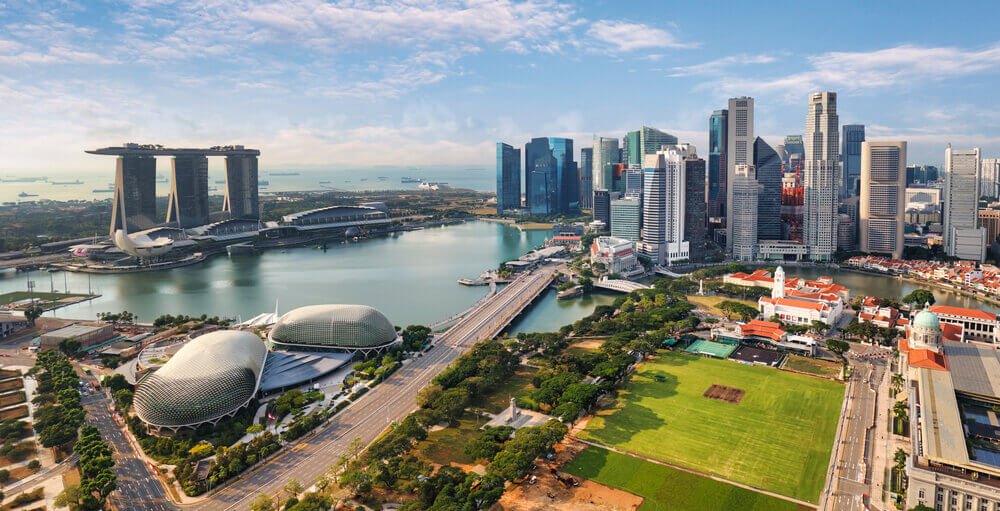
When Traveling To Singapore, timing your trip can make a significant difference in your overall experience. Known for its tropical climate, Singapore is warm and humid year-round, but certain months offer more favorable weather, fewer crowds, and unique cultural experiences. In this section, we’ll explore the best time to visit Singapore, taking into account weather patterns, festivals, and seasonal highlights to help you plan your trip perfectly.
Understanding Singapore’s Climate 🌡️
Singapore has a tropical rainforest climate, characterized by high humidity, consistent temperatures, and frequent rainfall. Here’s a breakdown of what to expect:
- Temperature: Average temperatures range from 25°C to 31°C (77°F to 88°F) year-round.
- Humidity: Humidity levels are consistently high, often exceeding 80%.
- Rainfall: Singapore experiences two monsoon seasons:
- Northeast Monsoon (December to March): Heavier rainfall, especially in December and January.
- Southwest Monsoon (June to September): Shorter, more intense rain showers.
Pro Tip: Pack lightweight, breathable clothing and an umbrella or raincoat to stay comfortable in Singapore’s humid climate.
Best Time to Visit Singapore: Dry Season (February to April) ☀️
The period from February to April is widely considered the best time for Traveling To Singapore. Here’s why:
Weather Conditions
- Less Rainfall: This is the driest period, with fewer rain showers and more sunny days.
- Pleasant Temperatures: While still warm, the weather is slightly cooler compared to other months.
Activities and Events
- Chinese New Year: Celebrated in January or February, this vibrant festival features lion dances, parades, and festive decorations.
- Outdoor Exploration: Ideal for visiting attractions like Gardens by the Bay, Sentosa Island, and the Singapore Zoo.
Pro Tip: Book accommodations and flights early, as this is a popular time for tourists.
Wet Season (November to January) 🌧️
The wet season, particularly from November to January, brings heavier rainfall but also unique experiences:
Weather Conditions
- Frequent Rain: Expect daily rain showers, often in the afternoon or evening.
- Cooler Evenings: The rain can bring slightly cooler temperatures, making evenings more pleasant.
Activities and Events
- Christmas and New Year: Singapore is beautifully decorated during the holiday season, with festive lights and events along Orchard Road and Marina Bay.
- Indoor Attractions: Visit museums, shopping malls, and indoor attractions like the ArtScience Museum.
Pro Tip: Carry a compact umbrella or raincoat and plan indoor activities for rainy days.
Shoulder Seasons (May to July and September to October) 🌤️
The shoulder seasons offer a balance between weather, crowds, and prices:
Weather Conditions
- Moderate Rainfall: Less intense than the wet season but still occasional showers.
- Warm Temperatures: Consistent warmth, perfect for outdoor activities.
Activities and Events
- Great Singapore Sale (June to August): A shopping extravaganza with discounts at malls and boutiques.
- Mid-Autumn Festival (September): Celebrated with lantern displays and mooncakes.
Pro Tip: Take advantage of lower hotel rates and fewer crowds during these months.
Festivals and Events to Plan Around 🎉
Singapore’s multicultural society means there’s always a festival or event to experience. Here are some highlights:
1. Chinese New Year (January/February)
- Highlights: Lion dances, parades, and festive decorations in Chinatown.
- Pro Tip: Book accommodations early, as this is a busy time for locals and tourists.
2. Hari Raya Puasa (May/June)
- Highlights: Celebrations in Kampong Glam, with traditional Malay food and cultural performances.
- Pro Tip: Visit Geylang Serai Market for festive decorations and snacks.
3. Deepavali (October/November)
- Highlights: Colorful lights and decorations in Little India, along with traditional Indian performances.
- Pro Tip: Try traditional sweets like laddu and jalebi at local eateries.
4. Christmas and New Year (December)
- Highlights: Festive lights and decorations along Orchard Road and Marina Bay.
- Pro Tip: Attend the Marina Bay Singapore Countdown for a spectacular fireworks display.
Tips for Traveling To Singapore During Peak Seasons 🧳
If you’re visiting during popular times like Chinese New Year or the holiday season, keep these tips in mind:
- Book Early: Flights and accommodations fill up quickly, so book well in advance.
- Plan Your Itinerary: Popular attractions can get crowded, so plan your visits early in the day.
- Stay Flexible: Be prepared for changes in weather or plans due to rain or crowds.
The best time for Traveling To Singapore depends on your preferences:
- For Pleasant Weather: Visit during the dry season (February to April).
- For Festive Experiences: Plan your trip around Chinese New Year, Deepavali, or Christmas.
- For Fewer Crowds and Lower Prices: Consider the shoulder seasons (May to July or September to October).
No matter when you visit, Singapore’s vibrant culture, stunning attractions, and delicious food will make your trip unforgettable. So, pack your bags, check the weather, and get ready to explore the Lion City!
💵 3. Currency and Payment Methods

When Traveling To Singapore, understanding the local currency and payment methods is essential for a smooth and hassle-free trip. Singapore is a modern, cashless-friendly city, but it’s still important to know how to handle money during your stay. In this section, we’ll cover everything you need to know about Singapore’s currency, payment options, and tips for managing your finances while exploring the Lion City.
Singapore’s Currency: The Singapore Dollar (SGD) 💰
The official currency of Singapore is the Singapore Dollar (SGD), often abbreviated as S$. Here’s what you need to know:
Currency Details
- Symbol: S$
- Subunits: 100 cents = 1 Singapore Dollar
- Banknotes: Commonly used denominations include S2,S2,S5, S10,S10,S50, and S$100.
- Coins: Commonly used coins include 5¢, 10¢, 20¢, 50¢, and S$1.
Pro Tip: Familiarize yourself with the currency before your trip to avoid confusion when making payments.
Exchanging Currency in Singapore 💱
Where to Exchange Currency
- Licensed Money Changers:
- Found in shopping malls, tourist areas, and neighborhoods like Chinatown and Little India.
- Often offer better rates than banks or airports.
- Popular money changers include Mustafa Centre and Raffles Money Change.
- Banks:
- Major banks like DBS, OCBC, and UOB offer currency exchange services.
- Rates are usually less competitive than money changers.
- Airport:
- Currency exchange counters are available at Changi Airport, but rates may be less favorable.
Pro Tip: Compare rates at multiple locations before exchanging money to get the best deal.
Using Credit and Debit Cards 💳
Singapore is a cashless-friendly city, and credit/debit cards are widely accepted. Here’s what you need to know:
Accepted Cards
- Visa and MasterCard: Widely accepted at hotels, restaurants, and retail stores.
- American Express: Accepted at most major establishments but less common at smaller shops.
- Contactless Payments: Many places accept contactless payments via Apple Pay, Google Pay, and Samsung Pay.
Tips for Using Cards
- Notify Your Bank: Inform your bank of your travel plans to avoid your card being blocked for suspicious activity.
- Check for Fees: Some cards charge foreign transaction fees, so check with your bank before using your card abroad.
- Carry a Backup Card: Always carry a second card in case of emergencies.
Pro Tip: Use a credit card with no foreign transaction fees to save on additional charges.
Cash: When and Where to Use It 💵
While cards are widely accepted, cash is still useful in certain situations:
Where Cash is Preferred
- Hawker Centers and Street Food Stalls: Many small vendors only accept cash.
- Public Transportation: While EZ-Link cards are commonly used, some buses and taxis may prefer cash.
- Small Shops and Markets: Traditional shops and markets in areas like Chinatown and Little India often operate on cash.
How Much Cash to Carry
- Daily Budget: S20−S20−S50 per person for small purchases and meals at hawker centers.
- Emergency Cash: Keep an additional S100−S100−S200 for emergencies.
Pro Tip: Withdraw cash from ATMs for better exchange rates compared to currency exchange counters.
ATMs in Singapore 🏧
ATMs are widely available throughout Singapore, making it easy to withdraw cash when needed.
Popular ATM Networks
- DBS/POSB: The largest network of ATMs in Singapore.
- OCBC: Widely available in shopping malls and tourist areas.
- UOB: Another reliable option with a broad network.
Tips for Using ATMs
- Check for Fees: Some ATMs charge withdrawal fees, especially for international cards.
- Use Bank ATMs: They often offer better rates and lower fees than standalone ATMs.
- Withdraw in SGD: Avoid dynamic currency conversion (DCC), which can result in unfavorable exchange rates.
Pro Tip: Use a multi-currency travel card like Revolut or Wise for convenient and cost-effective withdrawals.
EZ-Link and NETS Cards for Public Transport 🚇
Singapore’s public transportation system is cashless, so you’ll need an EZ-Link card or NETS FlashPay card to use buses and trains.
How to Get an EZ-Link Card
- Purchase Locations: Available at MRT stations, 7-Eleven stores, and Changi Airport.
- Cost: S12(includesS12(includesS5 stored value and S$7 non-refundable card cost).
- Top-Up: Add value at MRT stations, 7-Eleven stores, or via the EZ-Link app.
Benefits of Using EZ-Link
- Convenience: Use it for buses, trains, and even some retail purchases.
- Discounts: Enjoy discounted fares compared to single-trip tickets.
Pro Tip: Get a Singapore Tourist Pass for unlimited rides on buses and trains for 1, 2, or 3 days. Buy Here
Digital Payment Options 📱
Singapore is at the forefront of digital payments, with several options available:
Popular Digital Payment Apps
- PayNow: A peer-to-peer payment system linked to your phone number or NRIC/FIN.
- GrabPay: Use the Grab app for payments at partner merchants.
- DBS PayLah!: A popular mobile wallet for locals and tourists.
Pro Tip: While these apps are convenient, they may require a local bank account or phone number, so they’re more suitable for long-term visitors.
Tipping Culture in Singapore 💸
Tipping is not mandatory in Singapore, but it’s appreciated in certain situations:
- Restaurants: A 10% service charge is usually included in the bill.
- Taxis: Round up the fare or tip S1−S1−S2 for good service.
- Hotels: Tip porters S1−S1−S2 per bag.
Pro Tip: Always check if a service charge is included before tipping.
When Traveling To Singapore, managing your money wisely is key to a stress-free trip. By understanding the local currency, payment options, and tips for using cash and cards, you’ll be well-prepared to navigate Singapore’s cashless-friendly environment.
So, exchange some Singapore Dollars, get an EZ-Link card, and get ready to explore the Lion City with ease!
🗣️ 4. Language and Communication
When Traveling To Singapore, understanding the local language and communication norms can greatly enhance your experience. Singapore is a multicultural society with a rich linguistic heritage, making it a fascinating destination for travelers. In this section, we’ll explore the languages spoken in Singapore, tips for effective communication, and how to navigate language barriers during your trip.
Official Languages of Singapore 🌏
Singapore has four official languages, reflecting its diverse cultural heritage:
- English:
- Usage: Widely spoken and used in business, education, and daily life.
- Pro Tip: Most signs, menus, and public announcements are in English, making it easy for English-speaking travelers to navigate.
- Mandarin Chinese:
- Usage: Commonly spoken by the Chinese community, which makes up about 76% of the population.
- Pro Tip: Learning a few basic Mandarin phrases can help you connect with locals, especially in Chinatown.
- Malay:
- Usage: The national language, used in the national anthem and military commands.
- Pro Tip: Malay phrases are useful when visiting Kampong Glam or interacting with the Malay community.
- Tamil:
- Usage: Spoken by the Indian community, particularly in Little India.
- Pro Tip: A few Tamil phrases can go a long way when exploring Little India or interacting with Indian locals.
Pro Tip: English is the lingua franca, so you’ll have no trouble communicating in most situations.
English in Singapore: Singlish and Local Nuances 🗨️
While English is widely spoken, you may encounter Singlish, a unique blend of English, Malay, Chinese, and Tamil. Here’s what you need to know:
Common Singlish Phrases
- Lah: A particle used for emphasis (e.g., “Okay lah!”).
- Can: Means “yes” or “it’s possible” (e.g., “Can I have this?”).
- Kiasu: Describes someone who is afraid of losing out (e.g., “He’s so kiasu!”).
Tips for Understanding Singlish
- Listen for Context: Even if you don’t understand every word, the context will often make the meaning clear.
- Ask for Clarification: Locals are happy to explain Singlish phrases if you’re curious.
Pro Tip: Embrace Singlish as part of the local culture, but stick to standard English if you’re unsure.
Tips for Effective Communication in Singapore 🗣️
1. Learn Basic Phrases
While English is widely spoken, learning a few phrases in Mandarin, Malay, or Tamil can help you connect with locals:
- Mandarin:
- Hello: 你好 (Nǐ hǎo)
- Thank you: 谢谢 (Xiè xiè)
- How much?: 多少钱? (Duō shǎo qián?)
- Malay:
- Hello: Selamat pagi (Good morning) / Selamat petang (Good afternoon)
- Thank you: Terima kasih
- How much?: Berapa harga?
- Tamil:
- Hello: வணக்கம் (Vaṇakkam)
- Thank you: நன்றி (Naṉṟi)
- How much?: எவ்வளவு? (Evvaḷavu?)
Pro Tip: Use language apps like Google Translate or Duolingo to practice basic phrases before your trip.
2. Use Polite Gestures
Singaporeans value politeness and respect. Here are some tips:
- Greet with a Smile: A friendly smile goes a long way in breaking the ice.
- Use “Please” and “Thank You”: These simple words are appreciated in any language.
- Respect Personal Space: Avoid standing too close or touching someone without permission.
3. Be Mindful of Cultural Sensitivities
Singapore is a multicultural society, so it’s important to be respectful of different customs:
- Chinese Customs: Avoid giving clocks or white flowers, as they symbolize death.
- Malay Customs: Use your right hand for eating and greeting.
- Indian Customs: Remove your shoes before entering a temple or home.
Pro Tip: Observe and follow local customs to show respect and build rapport with locals.
Navigating Language Barriers 🚧
While English is widely spoken, you may encounter language barriers in certain situations. Here’s how to handle them:
1. Use Translation Apps
- Google Translate: Offers real-time translation for text, voice, and images.
- Microsoft Translator: Another reliable option for multilingual communication.
2. Carry a Phrasebook
A small phrasebook with common phrases in English, Mandarin, Malay, and Tamil can be a lifesaver.
3. Ask for Help
Most Singaporeans are bilingual or multilingual and are happy to assist if you’re struggling to communicate.
Pro Tip: Download offline language packs for your translation app in case you don’t have internet access.
Communication in Public Spaces 🏙️
1. Signage and Announcements
- Most signs, menus, and public announcements are in English, making it easy to navigate.
- MRT stations and buses also provide information in English, Mandarin, Malay, and Tamil.
2. Customer Service
- Staff at hotels, restaurants, and tourist attractions are usually fluent in English.
- If you’re unsure, ask if they speak English before proceeding.
Pro Tip: Look for the “Singapore Tourism Board” logo at tourist information centers for English-speaking staff.
When Traveling To Singapore, language and communication are unlikely to be major barriers, thanks to the widespread use of English. However, learning a few basic phrases in Mandarin, Malay, or Tamil can enhance your experience and help you connect with locals on a deeper level.
So, brush up on your language skills, embrace the local lingo, and get ready to explore the Lion City with confidence!
🚇 5. Transportation in Singapore

When Traveling To Singapore, getting around the city is a breeze thanks to its efficient and well-connected transportation system. Whether you’re exploring iconic landmarks, vibrant neighborhoods, or hidden gems, Singapore offers a variety of transportation options to suit every traveler’s needs. In this section, we’ll dive deep into the different modes of transportation, tips for navigating the system, and how to make the most of your travels in the Lion City.
Need a ride? Book airport transfers, taxis, or rental cars easily:
Kiwitaxi (Reliable private transfers worldwide)
Rentalcars.com (Compare car rentals for the best price)
Overview of Singapore’s Transportation System 🚌
Singapore’s transportation network is one of the best in the world, known for its reliability, cleanliness, and affordability. Here’s a quick overview of the options available:
- Mass Rapid Transit (MRT): The backbone of Singapore’s public transport system.
- Buses: Extensive network covering most areas of the city.
- Taxis and Ride-Hailing: Convenient for short trips or late-night travel.
- Walking and Cycling: Pedestrian-friendly streets and dedicated cycling paths.
Pro Tip: Use the CityMapper or MyTransport.SG app for real-time updates and route planning.
Mass Rapid Transit (MRT) 🚄
The MRT (Mass Rapid Transit) is the fastest and most efficient way to get around Singapore. Here’s what you need to know:
Key Features
- Coverage: Connects major attractions, neighborhoods, and Changi Airport.
- Frequency: Trains run every 2-5 minutes during peak hours.
- Operating Hours: Approximately 5:30 AM to midnight daily.
How to Use the MRT
- Get an EZ-Link Card or Singapore Tourist Pass:
- EZ-Link Card: A rechargeable card that can be used on buses and trains. Purchase it at any MRT station for S12(includesS12(includesS5 stored value).
- Singapore Tourist Pass: Offers unlimited rides for 1, 2, or 3 days. Prices start at S$22. Buy Here
- Tap In and Out: Simply tap your card on the reader at the gantry when entering and exiting the station.
- Plan Your Route: Use apps like Google Maps or CityMapper to find the best routes and train schedules.
Pro Tip: Avoid peak hours (7:30 AM - 9:30 AM and 5:30 PM - 7:30 PM) to escape the crowds.
Public Buses 🚌
Singapore’s bus network complements the MRT system, reaching areas that trains don’t cover. Here’s what you need to know:
Key Features
- Coverage: Extensive network covering residential areas, tourist spots, and more.
- Frequency: Buses run every 10-20 minutes, depending on the route.
- Payment: Use your EZ-Link card or Singapore Tourist Pass.
Tips for Using Buses
- Check the Route: Use the MyTransport.SG app to find bus numbers and schedules.
- Signal the Bus: Wave your hand to signal the bus driver when boarding.
- Tap Out: Don’t forget to tap your card when exiting the bus.
Pro Tip: Buses are a great way to enjoy scenic routes, especially along Marina Bay and Sentosa Island.
Taxis and Ride-Hailing Services 🚖
Taxis and ride-hailing services are convenient for short trips or late-night travel. Here’s what you need to know:
Taxis 🚕
- Availability: Taxis can be hailed on the street or found at designated taxi stands.
- Fares: Metered fares start at S$3.90, with additional charges during peak hours and late nights.
- Popular Companies: ComfortDelGro, SMRT Taxis.
Ride-Hailing Apps 📱
- Grab: The most popular ride-hailing app in Singapore. Offers options like GrabTaxi, GrabCar, and GrabShare.
- Gojek: A cheaper alternative to Grab, with similar services.
- TADA: A zero-commission app that often offers competitive pricing.
Pro Tip: Use ride-hailing apps during peak hours to avoid surge pricing.
Need a ride? Book airport transfers, taxis, or rental cars easily:
Kiwitaxi (Reliable private transfers worldwide)
Rentalcars.com (Compare car rentals for the best price)
Walking and Cycling 🚶♂️
Singapore is a pedestrian-friendly city with well-maintained sidewalks and dedicated cycling paths. Here’s what you need to know:
Walking 🚶♀️
- Best Areas: Marina Bay, Clarke Quay, Chinatown, and Kampong Glam are great for walking.
- Safety: Singapore is one of the safest cities in the world, making it ideal for walking at any time of day.
Cycling 🚴♂️
- Bike Rentals: Use bike-sharing services like SG Bike or HelloRide.
- Cycling Paths: Dedicated paths are available in parks like East Coast Park and along the Marina Bay waterfront.
Pro Tip: Rent a bike and explore the Southern Ridges, a scenic trail connecting parks and nature reserves.
Tips for Navigating Transportation in Singapore 🧳
To make the most of your Traveling To Singapore experience, follow these tips:
- Plan Ahead: Research your routes and schedules before heading out.
- Stay Connected: Use apps like CityMapper or MyTransport.SG for real-time updates.
- Carry Cash: While cards are widely accepted, some buses and taxis may prefer cash.
- Avoid Peak Hours: Trains and buses can get crowded during rush hours.
- Respect Local Etiquette: Offer your seat to elderly or pregnant passengers on public transport.
Final Thoughts on Transportation in Singapore 🌟
Singapore’s transportation system is a traveler’s dream, offering a variety of options to suit every need and budget. Whether you’re zipping across the city on the MRT, enjoying a scenic bus ride, or exploring on foot, getting around Singapore is easy, efficient, and enjoyable.
So, grab your EZ-Link card, plan your routes, and get ready to explore the Lion City with ease!
🏨 6. Best Areas to Stay in Singapore

When Traveling To Singapore, choosing the right area to stay can make a significant difference in your overall experience. Singapore offers a wide range of neighborhoods, each with its own unique vibe, attractions, and accommodations. Whether you’re looking for luxury, budget-friendly options, or a family-friendly environment, there’s a perfect area for you. In this section, we’ll explore the best areas to stay in Singapore, highlighting their key features, attractions, and top hotel recommendations.
1. Marina Bay 🌆
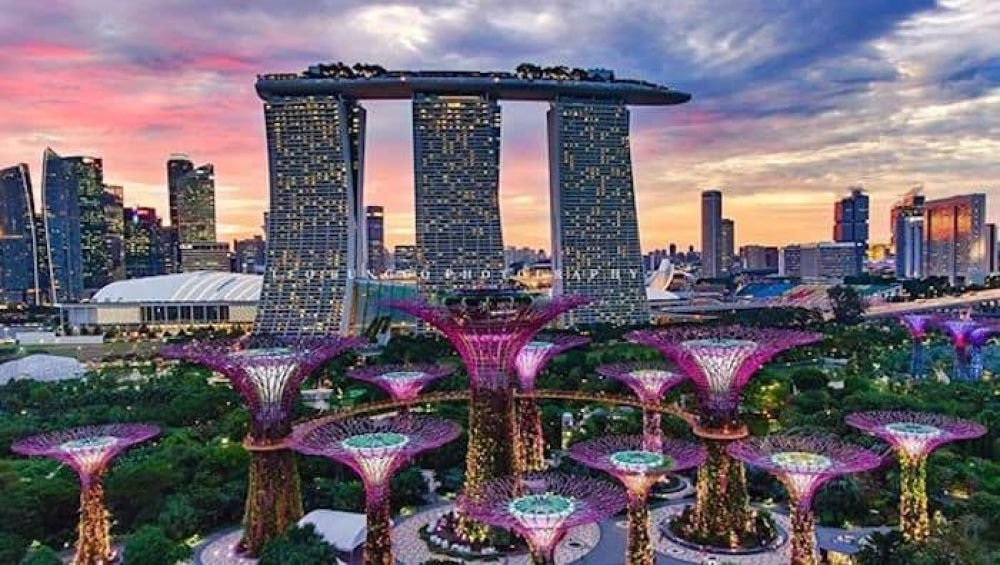
Why Stay in Marina Bay?
Marina Bay is the heart of Singapore’s modern skyline, home to iconic landmarks like Marina Bay Sands, Gardens by the Bay, and the Merlion Park. It’s perfect for first-time visitors and luxury travelers.
Key Features
- Iconic Landmarks: Marina Bay Sands, ArtScience Museum, and the Helix Bridge.
- Luxury Accommodations: High-end hotels with stunning views of the city skyline.
- Convenience: Easy access to public transport, shopping, and dining.
Top Hotels in Marina Bay
| Hotel | Price Range | Booking Link |
|---|---|---|
| Marina Bay Sands | $$$$ | Book Here |
| The Fullerton Bay Hotel | $$$$ | Book Here |
| Pan Pacific Singapore | $$$$ | Book Here |
Pro Tip: Stay in Marina Bay for easy access to major attractions and breathtaking views.
Find the best hotel deals for your next trip! Compare prices and book your stay on
Hostelworld: Meet fellow travellers — save on stays, Backpacker-friendly hostels, verified reviews and social stays that fit your budget and vibe.
Tripadvisor: Plan with confidence — reviews you can trust, Restaurants, hotels and experiences with millions of traveller reviews to help you choose what’s best.
Traveloka: Flights, hotels & more — simple booking, One-stop travel platform for great flight fares, hotel deals and local activities across Asia and beyond.
2. Orchard Road 🛍️
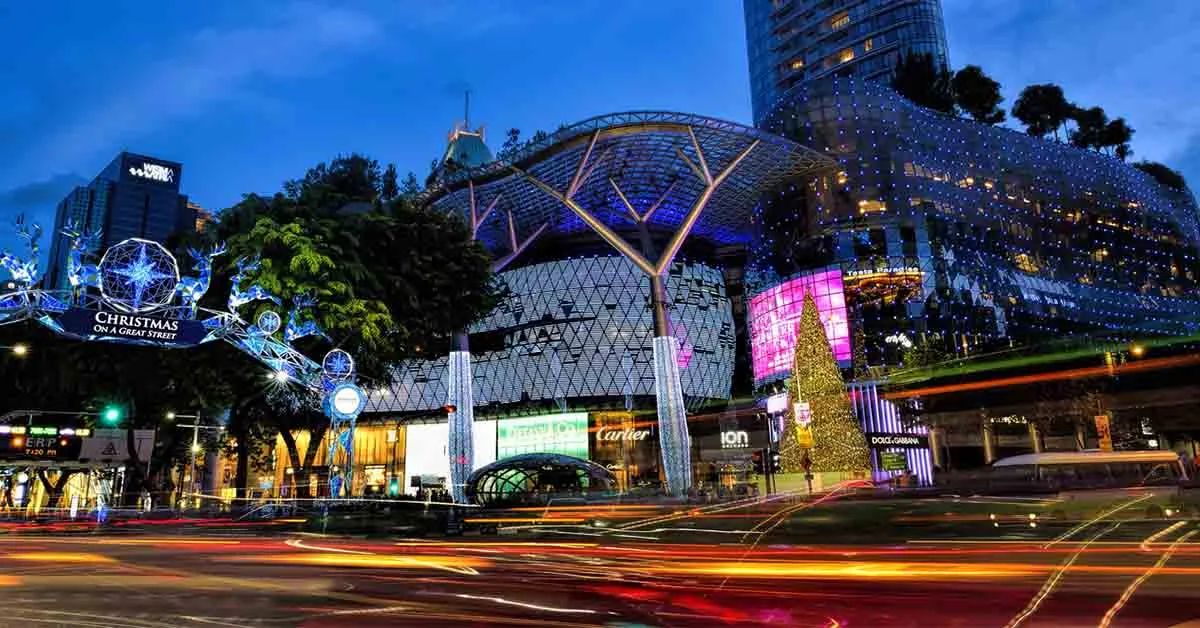
Why Stay in Orchard Road?
Orchard Road is Singapore’s shopping paradise, lined with luxury malls, boutiques, and restaurants. It’s ideal for shopaholics and families.
Key Features
- Shopping: ION Orchard, Ngee Ann City, and Paragon Shopping Centre.
- Dining: A wide range of restaurants, from fine dining to casual eateries.
- Family-Friendly: Close to attractions like the Singapore Botanic Gardens.
Top Hotels in Orchard Road
| Hotel | Price Range | Booking Link |
|---|---|---|
| Shangri-La Singapore | $$$$ | Book Here |
| Hotel Mi Rochor | $$ | Book Here |
| YOTEL Singapore Orchard Road | $$ | Book Here |
Pro Tip: Stay in Orchard Road for a shopping-centric experience and easy access to public transport.
3. Clarke Quay 🍸
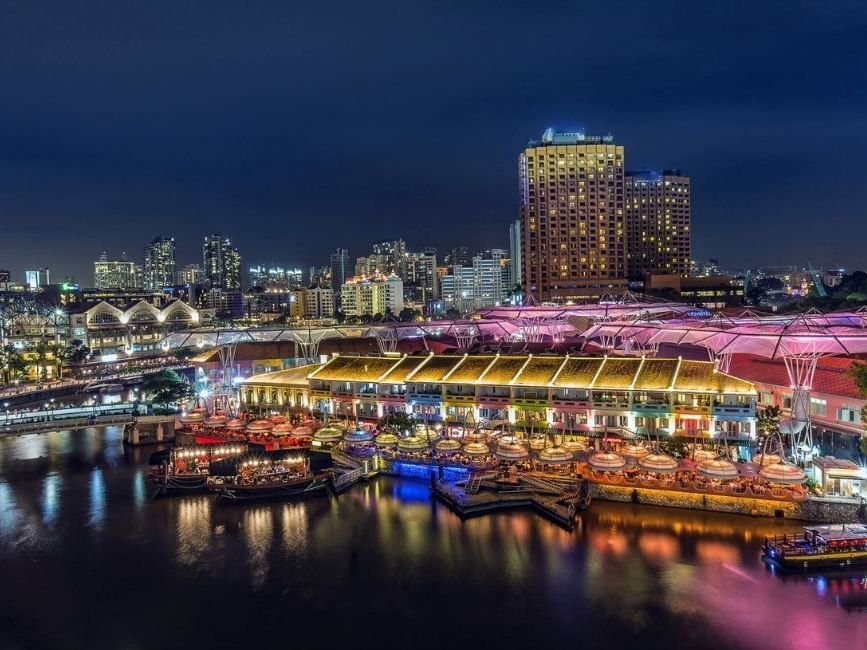
Why Stay in Clarke Quay?
Clarke Quay is a vibrant riverside area known for its nightlife, restaurants, and scenic views. It’s perfect for couples and nightlife enthusiasts.
Key Features
- Nightlife: Bars, clubs, and live music venues along the Singapore River.
- Dining: A wide range of restaurants offering local and international cuisine.
- Scenic Views: Beautiful views of the river and city skyline.
Top Hotels in Clarke Quay
| Hotel | Price Range | Booking Link |
|---|---|---|
| Park Regis Singapore | $$ | Book Here |
| Holiday Inn Express Singapore Clarke Quay | $$ | Book Here |
| Swissotel Merchant Court | $$$ | Book Here |
Pro Tip: Stay in Clarke Quay for a lively atmosphere and easy access to nightlife.
4. Chinatown 🏮

Why Stay in Chinatown?
Chinatown is a cultural hub with a mix of historic temples, traditional shophouses, and modern cafes. It’s ideal for budget travelers and culture lovers.
Key Features
- Cultural Heritage: Buddha Tooth Relic Temple, Chinatown Heritage Centre, and street markets.
- Affordable Accommodations: Budget hotels and hostels.
- Street Food: Maxwell Food Centre and Chinatown Complex Food Centre.
Top Hotels in Chinatown
Pro Tip: Stay in Chinatown for an affordable and culturally rich experience.
5. Sentosa Island 🏖️
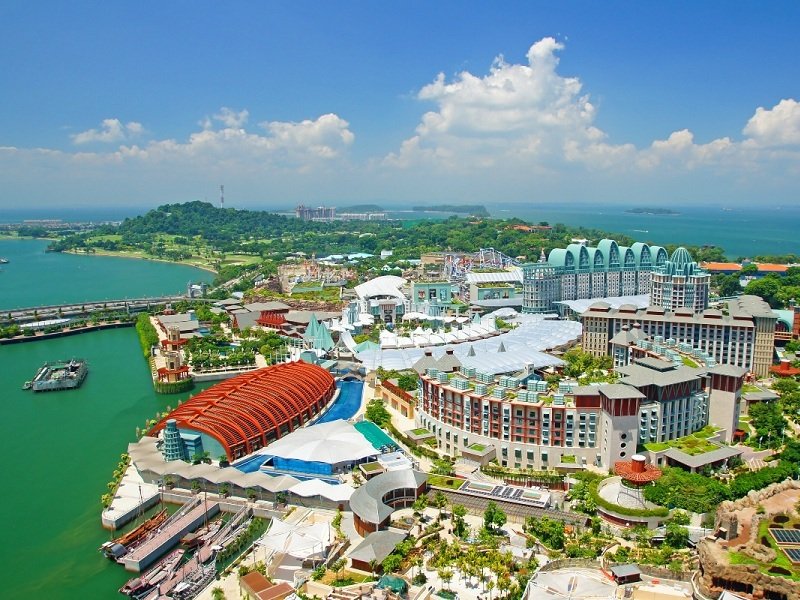
Why Stay in Sentosa Island?
Sentosa Island is a resort island with beaches, theme parks, and family-friendly attractions. It’s perfect for families and beach lovers.
Key Features
- Attractions: Universal Studios Singapore, S.E.A. Aquarium, and Adventure Cove Waterpark.
- Beaches: Siloso Beach, Palawan Beach, and Tanjong Beach.
- Luxury Resorts: High-end resorts with stunning views and amenities.
Top Hotels in Sentosa Island
| Hotel | Price Range | Booking Link |
|---|---|---|
| Shangri-La Sentosa | $$$$ | Book Here |
| Resorts World Sentosa - Hotel Michael | $$$$ | Book Here |
| Siloso Beach Resort | $$$ | Book Here |
Pro Tip: Stay in Sentosa Island for a relaxing and fun-filled family vacation.
6. Little India 🕌
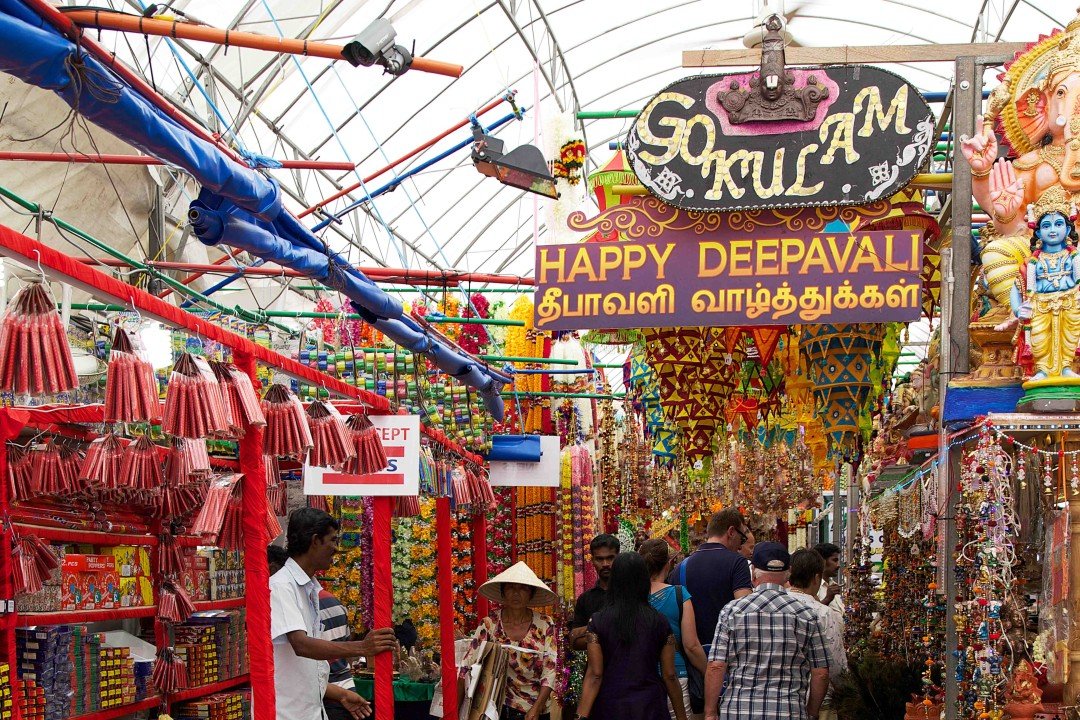
Why Stay in Little India?
Little India is a vibrant neighborhood known for its colorful streets, spice shops, and authentic Indian cuisine. It’s ideal for budget travelers and foodies.
Key Features
- Cultural Heritage: Sri Veeramakaliamman Temple, Tekka Centre, and Mustafa Centre.
- Affordable Accommodations: Budget hotels and hostels.
- Street Food: Authentic Indian dishes like biryani, prata, and teh tarik.
Top Hotels in Little India
Pro Tip: Stay in Little India for an affordable and culturally immersive experience.
Final Thoughts on Best Areas to Stay in Singapore 🌟
Choosing the right area to stay is crucial for a memorable trip when Traveling To Singapore. Whether you’re looking for luxury, budget-friendly options, or a family-friendly environment, Singapore has a neighborhood to suit your needs.
🍜 7. Must-Try Foods in Singapore

When Traveling To Singapore, one of the highlights of your trip will undoubtedly be the food. Singapore is a food lover’s paradise, offering a tantalizing mix of flavors influenced by Chinese, Malay, Indian, and Western cuisines. From hawker centers to fine dining, the city-state is a culinary playground that caters to every palate. In this section, we’ll explore the must-try foods in Singapore, where to find them, and tips for enjoying the local food scene like a pro.
Why Singapore’s Food Scene is Unmissable 🌟
Singapore’s food culture is a reflection of its multicultural heritage, making it one of the most diverse and exciting culinary destinations in the world. Here’s why you should dive into the local food scene:
- Hawker Centers: Affordable, delicious, and a true representation of Singapore’s food culture.
- Street Food: Iconic dishes that have gained international fame.
- Fine Dining: World-class restaurants offering innovative and traditional cuisines.
- Cultural Fusion: A unique blend of Chinese, Malay, Indian, and Western flavors.
Pro Tip: Don’t be afraid to try new dishes—Singapore’s food is as diverse as its people!
Must-Try Foods in Singapore 🍽️
Here’s a list of iconic dishes you simply can’t miss when Traveling To Singapore:
1. Hainanese Chicken Rice 🍗
- What It Is: Poached chicken served with fragrant rice cooked in chicken broth, accompanied by chili sauce and ginger paste.
- Where to Try: Tian Tian Hainanese Chicken Rice at Maxwell Food Centre.
- Pro Tip: Pair it with a side of steamed vegetables or a bowl of chicken soup.
2. Chilli Crab 🦀
- What It Is: Fresh crab cooked in a sweet and spicy tomato-based sauce, often served with mantou (fried buns) for dipping.
- Where to Try: Jumbo Seafood at East Coast Seafood Centre.
- Pro Tip: Wear a bib—this dish can get messy!
3. Laksa 🍜
- What It Is: A spicy noodle soup with coconut milk, shrimp, fish cakes, and cockles.
- Where to Try: 328 Katong Laksa at East Coast Road.
- Pro Tip: Try the Katong version, where the noodles are cut into smaller pieces for easy eating with a spoon.
4. Satay 🍢
- What It Is: Grilled meat skewers (usually chicken, beef, or lamb) served with peanut sauce, rice cakes, and cucumber.
- Where to Try: Lau Pa Sat Satay Street.
- Pro Tip: Order a mix of meats to sample different flavors.
5. Char Kway Teow 🍲
- What It Is: Stir-fried flat rice noodles with soy sauce, shrimp, eggs, and Chinese sausage.
- Where to Try: Outram Park Fried Kway Teow Mee at Hong Lim Market & Food Centre.
- Pro Tip: Ask for less oil if you prefer a lighter version.
6. Roti Prata 🥘
- What It Is: A flaky, crispy flatbread served with curry for dipping.
- Where to Try: The Roti Prata House at Upper Thomson Road.
- Pro Tip: Try the egg or cheese prata for a richer flavor.
7. Kaya Toast 🍞
- What It Is: Toasted bread spread with kaya (coconut jam) and butter, often served with soft-boiled eggs and coffee.
- Where to Try: Ya Kun Kaya Toast at various locations.
- Pro Tip: Dip the toast into the soft-boiled eggs for a creamy, savory-sweet combination.
8. Hokkien Mee 🍤
- What It Is: Stir-fried noodles with shrimp, squid, and eggs in a rich prawn broth.
- Where to Try: Nam Sing Hokkien Fried Mee at Old Airport Road Food Centre.
- Pro Tip: Squeeze some lime over the noodles for a tangy kick.
9. Ice Kachang 🍨
- What It Is: A refreshing dessert made with shaved ice, red beans, jelly, and syrup, often topped with evaporated milk.
- Where to Try: Annie’s Peanut Ice Kachang at Toa Payoh.
- Pro Tip: Try the durian version if you’re feeling adventurous!
10. Bak Kut Teh 🍖
- What It Is: A herbal pork rib soup, often served with rice and youtiao (fried dough sticks).
- Where to Try: Founder Bak Kut Teh at Balestier Road.
- Pro Tip: Order the peppery version for a spicier kick.
Where to Eat in Singapore 🍴
1. Hawker Centers
Hawker centers are the heart of Singapore’s food culture, offering affordable and delicious meals. Some of the best include:
- Maxwell Food Centre: Famous for Tian Tian Hainanese Chicken Rice.
- Lau Pa Sat: Known for its satay street and diverse food options.
- Old Airport Road Food Centre: A favorite among locals for its wide variety of dishes.
Pro Tip: Look for stalls with long queues—they’re usually the best!
2. Street Food Stalls
Street food stalls are scattered throughout the city, offering quick and tasty bites. Don’t miss:
- Chinatown Food Street: A bustling area with a variety of Chinese dishes.
- Tekka Centre: Located in Little India, it’s a great spot for Indian cuisine.
3. Fine Dining Restaurants
For a more upscale experience, try these renowned restaurants:
- Odette: A Michelin-starred restaurant offering French cuisine.
- Burnt Ends: Known for its modern barbecue dishes.
Pro Tip: Make reservations well in advance for fine dining restaurants.
Tips for Enjoying Singapore’s Food Scene 🧳
- Go Early: Popular hawker stalls often sell out by mid-afternoon.
- Share Dishes: Order a variety of dishes to share and sample more flavors.
- Stay Hydrated: Singapore’s heat can be intense, so drink plenty of water.
- Try Everything: Don’t be afraid to step out of your comfort zone and try new dishes.
When Traveling To Singapore, the food is not just a meal—it’s an experience. From the humble hawker centers to the luxurious fine dining restaurants, Singapore’s culinary scene offers something for everyone. So, bring your appetite, explore the local flavors, and savor every bite of your Singaporean adventure!
🙏 8. Cultural Etiquette and Tips
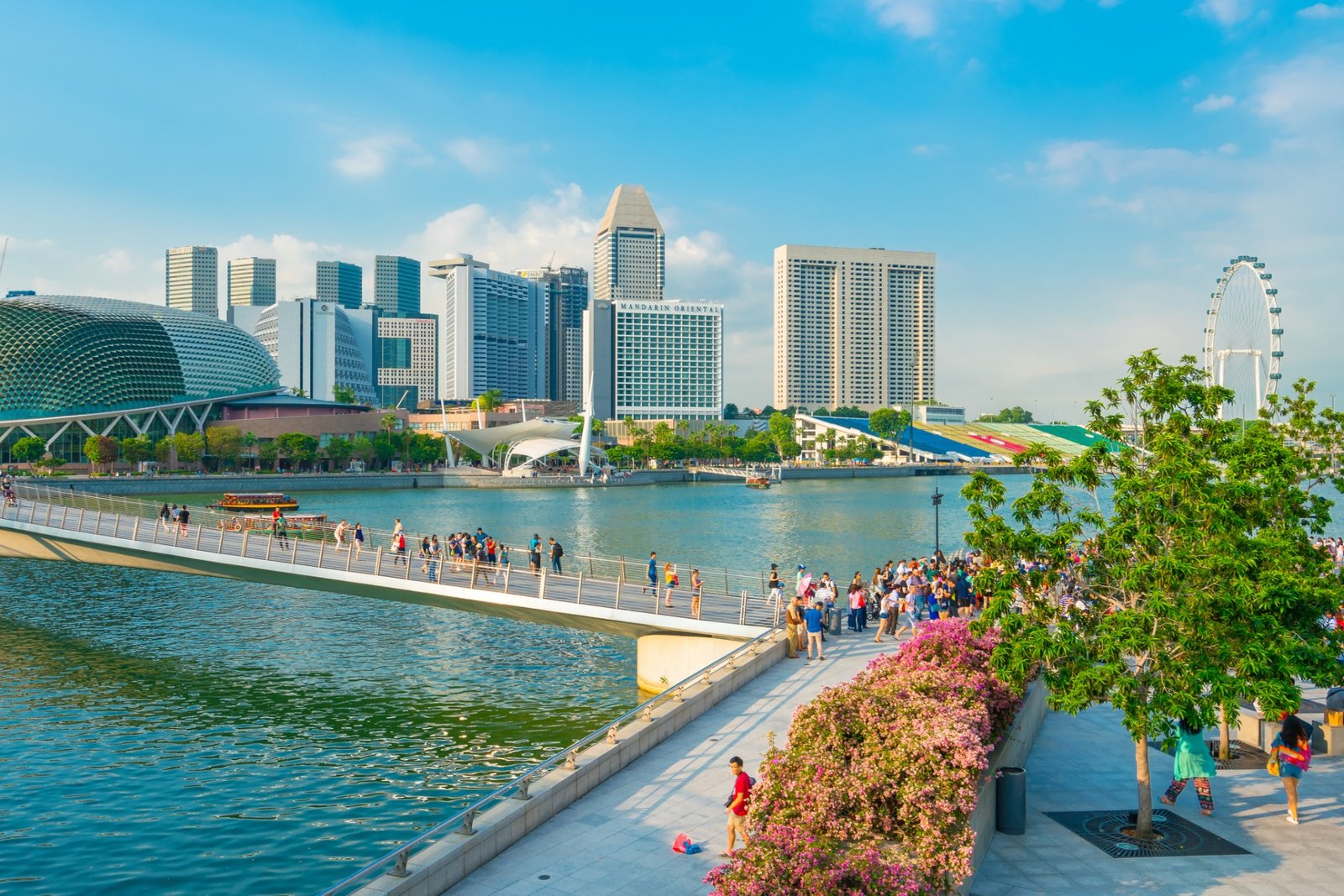
When Traveling To Singapore, understanding the local culture and etiquette is essential for a respectful and enjoyable experience. Singapore is a multicultural society with a rich blend of Chinese, Malay, Indian, and Western influences, each contributing to the city-state’s unique cultural fabric. In this section, we’ll explore the cultural norms, etiquette, and tips to help you navigate Singapore’s diverse society with ease and respect.
Why Cultural Etiquette Matters in Singapore 🌟
Singapore’s multicultural heritage makes it a fascinating destination, but it also means that cultural sensitivity is crucial. Here’s why understanding local etiquette is important:
- Respect for Diversity: Singapore is home to multiple ethnic groups, each with its own traditions and customs.
- Social Harmony: The city-state places a strong emphasis on social harmony and mutual respect.
- Positive Interactions: Understanding local norms helps you connect with locals and enhances your travel experience.
Pro Tip: A little effort to understand and respect local customs goes a long way in making your trip memorable.
Book top-rated tours and attractions on :
Viator (Best for curated global tours)
GetYourGuide (Skip-the-line tickets & local guides)
Klook (Great for Asia adventures & discounts)
General Cultural Etiquette in Singapore 🌏
1. Greetings and Politeness
- Handshakes: A firm handshake is a common greeting, especially in business settings.
- Titles: Use titles like “Mr.” or “Ms.” followed by the surname when addressing someone formally.
- Smiling: A friendly smile is always appreciated and helps break the ice.
Pro Tip: When greeting someone of a different ethnicity, observe their customs. For example, a slight bow is common among Chinese and Japanese locals.
2. Respect for Elders
- Addressing Elders: Use terms like “Uncle” or “Aunty” to show respect, even if they’re not related to you.
- Offering Seats: On public transport, offer your seat to elderly or pregnant passengers.
Pro Tip: Always show deference to elders, as respect for age is deeply ingrained in Singaporean culture.
3. Public Behavior
- Queuing: Singaporeans value orderly lines, so always wait your turn.
- Littering: Singapore has strict anti-littering laws, and fines can be hefty. Always dispose of trash in designated bins.
- Noise Levels: Keep your voice down in public spaces to avoid disturbing others.
Pro Tip: Follow the rules and regulations to avoid fines and show respect for the local community.
Cultural Etiquette by Ethnic Group 🌍
1. Chinese Customs
- Gift Giving: Avoid giving clocks, white flowers, or sharp objects, as they symbolize death or separation.
- Dining Etiquette: Use chopsticks correctly and avoid sticking them upright in a bowl of rice, as it resembles funeral rites.
- Festivals: During Chinese New Year, it’s customary to give red packets (ang baos) with money as a sign of good luck.
Pro Tip: If invited to a Chinese home, bring a small gift like fruit or pastries.
2. Malay Customs
- Greetings: Use the traditional Malay greeting “Selamat pagi” (Good morning) or “Selamat petang” (Good afternoon).
- Dining Etiquette: Always use your right hand for eating and greeting, as the left hand is considered unclean.
- Dress Code: Dress modestly when visiting mosques or Malay homes, covering your shoulders and knees.
Pro Tip: Remove your shoes before entering a Malay home or mosque.
3. Indian Customs
- Greetings: Use the traditional Indian greeting “Namaste” with folded hands.
- Dining Etiquette: Eat with your right hand, as the left hand is considered unclean.
- Festivals: During Deepavali, it’s customary to exchange sweets and light oil lamps.
Pro Tip: Remove your shoes before entering an Indian home or temple.
Tips for Navigating Cultural Differences 🧳
1. Dress Modestly
- General Rule: Dress modestly, especially when visiting religious sites or attending formal events.
- Religious Sites: Cover your shoulders and knees when visiting temples, mosques, or churches.
Pro Tip: Carry a scarf or shawl to cover up when needed.
2. Be Mindful of Religious Practices
- Prayer Times: Be respectful of prayer times, especially in Muslim-majority areas.
- Dietary Restrictions: Be aware of dietary restrictions, such as halal for Muslims and vegetarianism for some Hindus.
Pro Tip: When dining with locals, ask about their dietary preferences to avoid any misunderstandings.
3. Learn Basic Phrases
- English: While widely spoken, learning a few phrases in Mandarin, Malay, or Tamil can help you connect with locals.
- Common Phrases:
- Mandarin: 你好 (Nǐ hǎo) - Hello
- Malay: Terima kasih - Thank you
- Tamil: நன்றி (Naṉṟi) - Thank you
Pro Tip: Use language apps like Google Translate or Duolingo to practice basic phrases before your trip.
When Traveling To Singapore, understanding and respecting local customs and etiquette is key to a positive and enriching experience. By being mindful of cultural differences, showing respect for traditions, and embracing the diversity of Singapore’s society, you’ll not only enjoy your trip but also leave a positive impression on the locals.
🏞️ 9. Top Attractions in Singapore
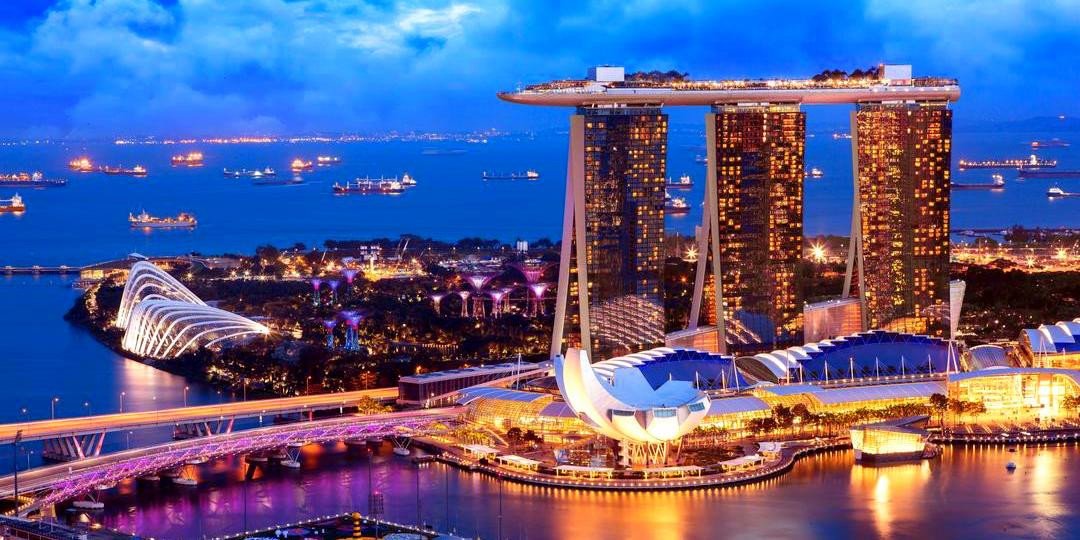
When Traveling To Singapore, you’ll find a city that seamlessly blends modernity with nature, offering a wide array of attractions that cater to every type of traveler. From iconic landmarks and lush green spaces to cultural hubs and family-friendly attractions, Singapore is a destination that promises unforgettable experiences. In this section, we’ll explore the top attractions in Singapore, providing detailed information, tips, and booking links to help you make the most of your visit.
Book top-rated tours and attractions on :
Viator (Best for curated global tours)
GetYourGuide (Skip-the-line tickets & local guides)
Klook (Great for Asia adventures & discounts)
Why Singapore’s Attractions Are Unmissable 🌟
Singapore’s attractions are a testament to its unique blend of innovation, culture, and natural beauty. Here’s why you should explore these top spots:
- Iconic Landmarks: From Marina Bay Sands to the Merlion, Singapore’s landmarks are world-renowned.
- Cultural Heritage: Explore neighborhoods like Chinatown, Little India, and Kampong Glam for a taste of Singapore’s multicultural heritage.
- Family-Friendly Fun: Attractions like Sentosa Island and the Singapore Zoo are perfect for families.
- Nature and Greenery: Singapore’s commitment to sustainability is evident in its lush parks and gardens.
Pro Tip: Plan your itinerary in advance to make the most of your time and avoid long queues.
Top Attractions in Singapore 🏙️
1. Marina Bay Sands 🌆
- What It Is: An iconic integrated resort featuring a luxury hotel, shopping mall, and the SkyPark Observation Deck.
- Highlights: Infinity pool, ArtScience Museum, and stunning views of Marina Bay.
- Pro Tip: Visit the SkyPark at sunset for breathtaking views of the city skyline. Book Here
2. Gardens by the Bay 🌳
- What It Is: A futuristic nature park with Supertrees, Flower Dome, and Cloud Forest.
- Highlights: OCBC Skyway, Garden Rhapsody Light Show, and lush greenery.
- Pro Tip: Visit in the evening to see the Supertrees illuminated. Book Here
3. Sentosa Island 🏖️
- What It Is: A resort island with beaches, theme parks, and family-friendly attractions.
- Highlights: Universal Studios Singapore, S.E.A. Aquarium, and Adventure Cove Waterpark.
- Pro Tip: Spend a full day exploring the island’s attractions. Book Here
4. Singapore Zoo 🦒
- What It Is: One of the world’s best rainforest zoos, home to over 2,800 animals.
- Highlights: Open enclosures, animal shows, and the Night Safari.
- Pro Tip: Visit the Night Safari for a unique experience. Book Here
5. Chinatown 🏮
- What It Is: A cultural hub with historic temples, traditional shophouses, and street markets.
- Highlights: Buddha Tooth Relic Temple, Chinatown Heritage Centre, and Maxwell Food Centre.
- Pro Tip: Explore the area on foot to soak in the vibrant atmosphere.
6. Little India 🕌
- What It Is: A colorful neighborhood known for its spice shops, temples, and authentic Indian cuisine.
- Highlights: Sri Veeramakaliamman Temple, Tekka Centre, and Mustafa Centre.
- Pro Tip: Visit during Deepavali for festive decorations and celebrations.
7. Kampong Glam 🎨
- What It Is: A historic Malay-Arab neighborhood with trendy boutiques, street art, and the Sultan Mosque.
- Highlights: Haji Lane, Arab Street, and traditional Malay cuisine.
- Pro Tip: Explore the area’s street art and quirky shops.
8. Singapore Botanic Gardens 🌿
- What It Is: A UNESCO World Heritage Site and one of the world’s most beautiful tropical gardens.
- Highlights: National Orchid Garden, Swan Lake, and lush walking trails.
- Pro Tip: Visit early in the morning for a peaceful experience.
9. Clarke Quay 🍸
- What It Is: A vibrant riverside area known for its nightlife, restaurants, and scenic views.
- Highlights: Singapore River Cruise, riverside dining, and live music venues.
- Pro Tip: Visit in the evening for a lively atmosphere.
10. Jewel Changi Airport ✈️
- What It Is: A stunning airport complex with a rainforest vortex, canopy park, and shopping.
- Highlights: HSBC Rain Vortex, Canopy Bridge, and family-friendly attractions.
- Pro Tip: Visit during a layover or before your flight. Book Here
Tips for Exploring Singapore’s Attractions 🧳
- Book Tickets in Advance: Popular attractions like Universal Studios and Gardens by the Bay often have long queues.
- Use Public Transport: The MRT is the fastest and most efficient way to get around.
- Stay Hydrated: Singapore’s tropical climate can be intense, so carry a water bottle.
- Plan Your Itinerary: Group attractions by location to save time and transportation costs.
When Traveling To Singapore, the city’s top attractions offer a diverse range of experiences that cater to every interest. Whether you’re marveling at the futuristic architecture of Marina Bay Sands, exploring the lush greenery of Gardens by the Bay, or immersing yourself in the cultural heritage of Chinatown and Little India, Singapore promises unforgettable memories.
🛍️ 10. Shopping When Traveling To Singapore
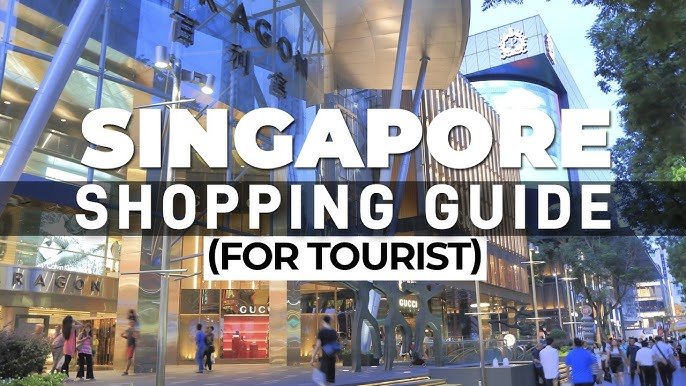
When Traveling To Singapore, shopping is an experience you simply can’t miss. Known as a shopper’s paradise, Singapore offers everything from luxury boutiques and sprawling malls to bustling street markets and unique local finds. Whether you’re looking for high-end fashion, electronics, souvenirs, or traditional crafts, Singapore has it all. In this section, we’ll explore the best shopping destinations, tips for savvy shopping, and how to make the most of your retail therapy in the Lion City.
Why Shopping in Singapore is Unmissable 🌟
Singapore’s shopping scene is as diverse as its culture, offering something for every budget and taste. Here’s why shopping should be on your itinerary:
- Luxury Brands: Orchard Road is home to world-class luxury brands and designer boutiques.
- Affordable Finds: Street markets and budget malls offer great deals on fashion, electronics, and souvenirs.
- Cultural Shopping: Explore neighborhoods like Chinatown, Little India, and Kampong Glam for unique, culturally rich items.
- Tax-Free Shopping: Enjoy tax refunds on purchases made by tourists.
Pro Tip: Plan your shopping spree during the Great Singapore Sale (June to August) for massive discounts and promotions.
Top Shopping Destinations in Singapore 🏬
1. Orchard Road 🛍️
- What It Is: Singapore’s premier shopping street, lined with luxury malls and boutiques.
- Highlights:
- ION Orchard: High-end brands like Prada, Louis Vuitton, and Gucci.
- Ngee Ann City: Home to Takashimaya and luxury brands.
- Paragon: Upscale shopping with brands like Burberry and Versace.
- Pro Tip: Visit the ION Sky Observation Deck for panoramic views of Orchard Road.
2. Marina Bay Sands Shopping Mall 🌆
- What It Is: A luxury shopping destination with over 170 stores.
- Highlights:
- Louis Vuitton Island Maison: A standalone store with exclusive collections.
- Prada: Flagship store with a wide range of products.
- Pro Tip: Combine shopping with a visit to the ArtScience Museum and SkyPark.
3. VivoCity 🏢
- What It Is: Singapore’s largest shopping mall, located near Sentosa Island.
- Highlights:
- Uniqlo: Affordable and trendy fashion.
- Toys “R” Us: A paradise for kids and toy lovers.
- Pro Tip: Enjoy the rooftop amphitheater and Sky Park with views of Sentosa.
4. Bugis Street Market 🛒
- What It Is: A bustling market known for affordable fashion and souvenirs.
- Highlights:
- Clothing: Trendy outfits at bargain prices.
- Accessories: Jewelry, bags, and shoes.
- Pro Tip: Bargain politely for the best deals.
5. Chinatown Street Market 🏮
- What It Is: A vibrant market offering traditional Chinese goods and souvenirs.
- Highlights:
- Silk Products: Beautiful silk scarves and clothing.
- Tea: A wide variety of Chinese teas.
- Pro Tip: Visit during Chinese New Year for festive decorations and special items.
6. Little India’s Mustafa Centre 🕌
- What It Is: A 24-hour shopping mall offering everything from electronics to groceries.
- Highlights:
- Electronics: Affordable gadgets and accessories.
- Spices: A wide range of Indian spices and snacks.
- Pro Tip: Bargain for better deals, especially on electronics.
7. Haji Lane 🎨
- What It Is: A narrow street filled with quirky boutiques and vintage shops.
- Highlights:
- Vintage Clothing: Unique and retro fashion finds.
- Local Designs: Boutiques showcasing Singaporean designers.
- Pro Tip: Explore the street art and cozy cafes in the area.
Tips for Shopping in Singapore 🧳
1. Tax Refunds
- Eligibility: Tourists can claim a refund on the 7% Goods and Services Tax (GST) for purchases above S$100.
- How to Claim: Look for stores with the “Tax-Free” logo and present your passport at the time of purchase.
Pro Tip: Use the eTRS (Electronic Tourist Refund Scheme) for a hassle-free refund process.
2. Bargaining
- Where to Bargain: Street markets like Bugis Street and Chinatown are ideal for bargaining.
- How to Bargain: Start by offering 50% of the asking price and negotiate politely.
Pro Tip: Always bargain with a smile and be prepared to walk away if the price isn’t right.
3. Payment Methods
- Credit Cards: Widely accepted, but check for foreign transaction fees.
- Cash: Useful for small purchases and street markets.
Pro Tip: Use a multi-currency travel card like Revolut or Wise for convenient and cost-effective transactions.
4. Shopping Hours
- Malls: Typically open from 10:00 AM to 10:00 PM.
- Street Markets: Open until late, with some operating 24 hours (e.g., Mustafa Centre).
Pro Tip: Visit malls early in the day to avoid crowds.
When Traveling To Singapore, shopping is more than just a pastime—it’s an experience that reflects the city’s vibrant culture and cosmopolitan charm. From luxury malls on Orchard Road to bustling street markets in Chinatown and Little India, Singapore offers endless opportunities to indulge in retail therapy.
So, pack your shopping bags, bring your bargaining skills, and get ready to explore the best shopping destinations in the Lion City!
🛡️ 11. Safety and Health Tips When Traveling To Singapore
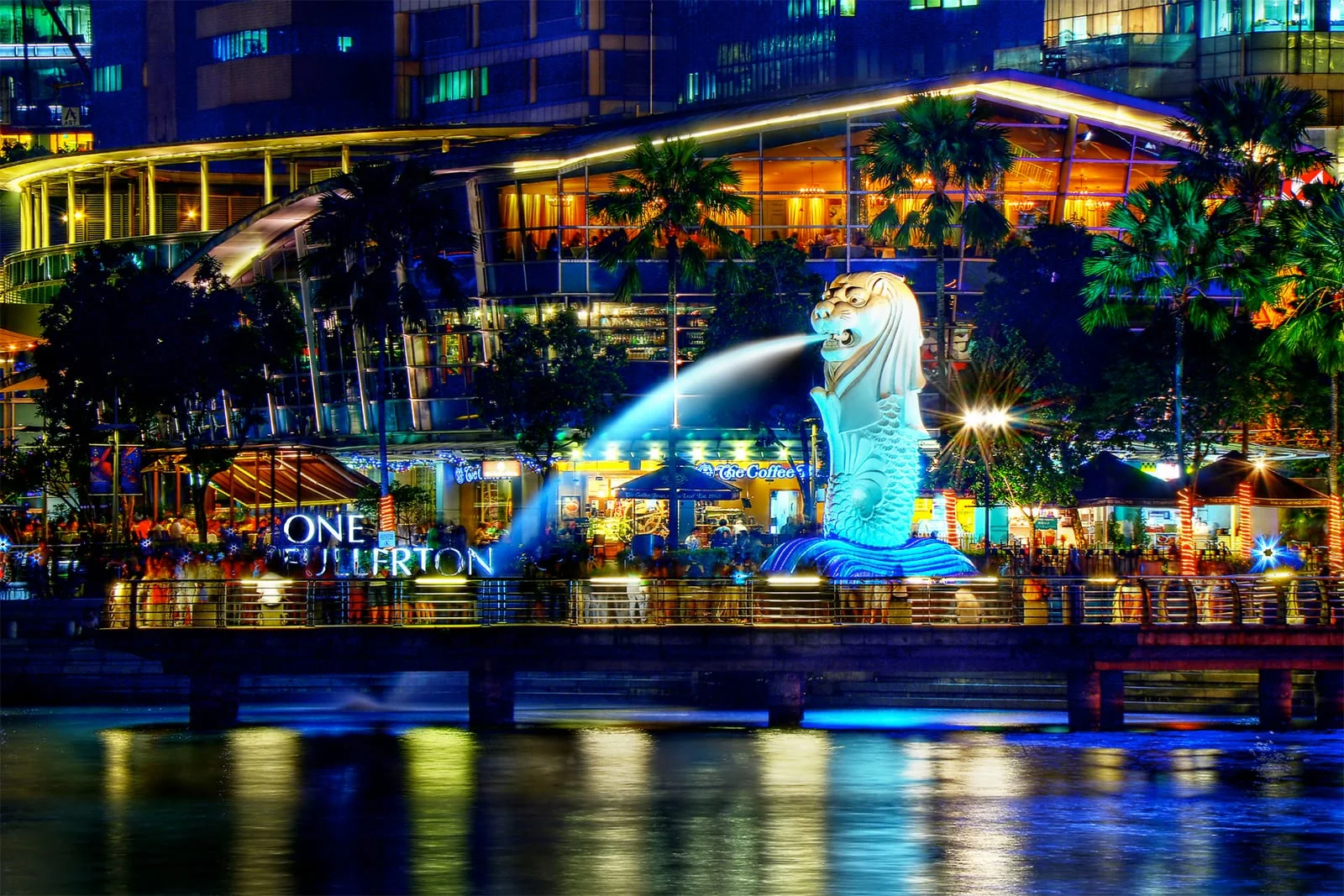
When Traveling To Singapore, safety and health are paramount to ensure a smooth and enjoyable trip. Known as one of the safest cities in the world, Singapore boasts low crime rates, excellent healthcare facilities, and strict hygiene standards. However, it’s still important to be prepared and informed about local safety norms and health precautions. In this section, we’ll provide detailed tips and guidelines to help you stay safe and healthy during your visit to the Lion City.
Why Safety and Health Matter in Singapore 🌟
Singapore’s reputation for safety and cleanliness makes it an ideal destination for travelers. Here’s why you should prioritize safety and health during your trip:
- Low Crime Rates: Singapore has one of the lowest crime rates in the world, making it safe for solo travelers, families, and everyone in between.
- High Hygiene Standards: The city-state is known for its cleanliness and strict enforcement of public health regulations.
- Excellent Healthcare: Singapore’s healthcare system is world-class, with well-equipped hospitals and clinics.
Pro Tip: A little preparation goes a long way in ensuring a safe and healthy trip.
Safety Tips for Traveling To Singapore 🛡️
1. General Safety
- Low Crime: Violent crime is rare, but petty crimes like pickpocketing can occur in crowded areas.
- Stay Alert: Keep an eye on your belongings, especially in tourist hotspots like Orchard Road and Marina Bay Sands.
- Emergency Numbers:
- Police: 999
- Ambulance/Fire: 995
Pro Tip: Save these numbers in your phone and keep a written copy in your wallet.
2. Transportation Safety
- Public Transport: The MRT and buses are safe and reliable, but avoid empty carriages late at night.
- Taxis and Ride-Hailing: Use reputable services like Grab or ComfortDelGro.
- Walking: Stick to well-lit and populated areas, especially at night.
Pro Tip: Use the MyTransport.SG app for real-time updates on public transport safety and schedules.
3. Scams and Fraud
- Common Scams: Be cautious of overly friendly strangers offering deals that seem too good to be true.
- Credit Card Safety: Use credit cards with chip technology and monitor your transactions regularly.
Pro Tip: Avoid sharing personal information with strangers and be wary of unsolicited offers.
4. Natural Hazards
- Weather: Singapore’s tropical climate means sudden rain showers and thunderstorms. Carry an umbrella or raincoat.
- Mosquitoes: Use insect repellent to protect against mosquito-borne diseases like dengue fever.
Pro Tip: Check the weather forecast daily and plan your activities accordingly.
Health Tips for Traveling To Singapore 🏥
1. Vaccinations
- Routine Vaccines: Ensure your routine vaccinations (e.g., measles, flu) are up to date.
- Yellow Fever: If you’re traveling from a country with a risk of yellow fever, you’ll need proof of vaccination.
Pro Tip: Consult your doctor or a travel clinic at least 4-6 weeks before your trip.
2. Food and Water Safety
- Tap Water: Singapore’s tap water is safe to drink, but bottled water is widely available if you prefer.
- Street Food: Generally safe, but choose stalls with long queues for the freshest food.
Pro Tip: Carry hand sanitizer and wet wipes for hygiene, especially before eating.
3. Healthcare Facilities
- Hospitals: Singapore has world-class hospitals like Singapore General Hospital and Mount Elizabeth Hospital.
- Clinics: Walk-in clinics are available for minor ailments and injuries.
Pro Tip: Purchase travel insurance that covers medical expenses and emergency evacuation.
4. COVID-19 Guidelines
- Vaccination Status: No proof of vaccination is required for entry.
- Testing: No pre-departure or on-arrival tests are required.
- Mask Mandate: Masks are optional in most public places but may be required in healthcare facilities.
Pro Tip: Monitor the Ministry of Health (MOH) website for the latest updates on COVID-19 guidelines.
Tips for Staying Safe and Healthy 🧳
- Stay Hydrated: Singapore’s tropical climate can be intense, so drink plenty of water.
- Use Sunscreen: Protect your skin from the sun with SPF 30 or higher.
- Carry Medications: Bring a basic first-aid kit and any prescription medications you need.
- Respect Local Laws: Singapore has strict laws, including bans on chewing gum and littering.
Pro Tip: Familiarize yourself with local laws and customs to avoid any misunderstandings.
When Traveling To Singapore, prioritizing safety and health ensures a worry-free and enjoyable trip. By staying informed, prepared, and mindful of local norms, you can fully immerse yourself in the vibrant culture and stunning attractions of the Lion City.
💰 12. Tipping Culture in Singapore

When Traveling To Singapore, understanding the local tipping culture is essential to navigate social norms and show appreciation for services. Unlike some countries where tipping is customary, Singapore has a unique approach to gratuities. In this section, we’ll explore Singapore’s tipping culture, when and where to tip, and how to handle gratuities during your trip.
Why Tipping Culture Matters in Singapore 🌟
Singapore’s tipping culture reflects its blend of Eastern and Western influences. Here’s why it’s important to understand:
- Service Charges: Many establishments include a service charge in the bill, eliminating the need for additional tipping.
- Cultural Norms: Tipping is not expected but is appreciated in certain situations.
- Budgeting: Knowing when and how much to tip helps you manage your travel expenses.
Pro Tip: Always check your bill for a service charge before deciding whether to tip.
General Tipping Guidelines in Singapore 💵
1. Restaurants and Cafes 🍽️
- Service Charge: Most restaurants include a 10% service charge in the bill.
- Tipping: Additional tipping is not expected but can be given for exceptional service.
- How to Tip: Leave small change or round up the bill.
Pro Tip: If no service charge is included, a 10% tip is appreciated but not mandatory.
2. Taxis and Ride-Hailing Services 🚖
- Service Charge: Taxis and ride-hailing apps like Grab do not include a service charge.
- Tipping: Round up the fare or tip S1−S1−S2 for good service.
- How to Tip: Hand the tip directly to the driver or add it through the app if available.
Pro Tip: Tipping is more common for ride-hailing services than for traditional taxis.
3. Hotels 🏨
- Service Charge: Most hotels include a 10% service charge in the bill.
- Tipping:
- Porters: S1−S1−S2 per bag.
- Housekeeping: S2−S2−S5 per day, left in an envelope or on the bedside table.
- How to Tip: Hand the tip directly to the staff or leave it in a designated envelope.
Pro Tip: Tipping is not expected but is appreciated for personalized service.
4. Tour Guides and Drivers 🚐
- Service Charge: Tour packages often include a service charge.
- Tipping:
- Tour Guides: S5−S5−S10 per day for excellent service.
- Drivers: S2−S2−S5 per day.
- How to Tip: Hand the tip directly to the guide or driver at the end of the tour.
Pro Tip: Tipping is more common for private tours than for group tours.
5. Spas and Salons 💆♀️
- Service Charge: Many spas and salons include a service charge in the bill.
- Tipping: Additional tipping is not expected but can be given for exceptional service.
- How to Tip: Leave small change or round up the bill.
Pro Tip: If no service charge is included, a 10% tip is appreciated but not mandatory.
When Not to Tip 🚫
1. Hawker Centers and Food Courts 🍜
- Service Charge: No service charge is included.
- Tipping: Tipping is not expected and may even be refused.
Pro Tip: Show appreciation by returning to the stall or recommending it to others.
2. Public Transport 🚇
- Service Charge: No service charge is included.
- Tipping: Tipping is not expected for bus or MRT services.
Pro Tip: Offer your seat to elderly or pregnant passengers as a gesture of kindness.
3. Retail Stores 🛍️
- Service Charge: No service charge is included.
- Tipping: Tipping is not expected and may be considered unusual.
Pro Tip: A simple “thank you” is sufficient to show appreciation.
Tips for Handling Tipping in Singapore 🧳
- Carry Small Change: Keep small denominations of Singapore Dollars (SGD) for tipping.
- Check the Bill: Always check if a service charge is included before tipping.
- Be Discreet: Hand tips directly to the staff or leave them in an envelope.
- Respect Local Norms: Follow local customs and avoid over-tipping.
Pro Tip: Use a multi-currency travel card like Revolut or Wise for convenient and cost-effective transactions.
When Traveling To Singapore, understanding the local tipping culture helps you navigate social norms and show appreciation for services. While tipping is not mandatory, it’s a thoughtful gesture that can enhance your interactions with locals.
🌞 13. Weather and Packing Tips

When Traveling To Singapore, understanding the local weather and packing appropriately is crucial for a comfortable and enjoyable trip. Singapore’s tropical climate means it’s warm and humid year-round, but there are seasonal variations to consider. In this section, we’ll explore Singapore’s weather patterns, what to pack, and tips for staying comfortable in the Lion City’s climate.
Understanding Singapore’s Weather 🌦️
Singapore has a tropical rainforest climate, characterized by high humidity, consistent temperatures, and frequent rainfall. Here’s what you need to know:
1. Temperature
- Average Range: 25°C to 31°C (77°F to 88°F) year-round.
- Daily Variation: Temperatures are relatively stable throughout the day and night.
2. Humidity
- Levels: Humidity often exceeds 80%, making the air feel warmer than the actual temperature.
3. Rainfall
- Monsoon Seasons:
- Northeast Monsoon (December to March): Heavier rainfall, especially in December and January.
- Southwest Monsoon (June to September): Shorter, more intense rain showers.
- Rain Patterns: Sudden rain showers are common, often occurring in the afternoon or evening.
Pro Tip: Check the weather forecast daily and plan your activities accordingly.
Best Time to Visit Singapore Based on Weather 🌤️
While Singapore is a year-round destination, some months offer more favorable weather:
1. Dry Season (February to April)
- Weather: Less rainfall and more sunny days.
- Activities: Ideal for outdoor exploration and sightseeing.
2. Wet Season (November to January)
- Weather: Frequent rain showers and cooler evenings.
- Activities: Perfect for indoor attractions and festive celebrations like Christmas and Chinese New Year.
3. Shoulder Seasons (May to July and September to October)
- Weather: Moderate rainfall and warm temperatures.
- Activities: Great for shopping during the Great Singapore Sale (June to August).
Pro Tip: Visit during the dry season for the most pleasant weather and fewer disruptions from rain.
Packing Tips for Traveling To Singapore 🧳
1. Clothing
- Lightweight Fabrics: Pack breathable materials like cotton and linen to stay cool.
- Layering: Bring a light jacket or cardigan for air-conditioned spaces.
- Modest Attire: Dress modestly when visiting religious sites (cover shoulders and knees).
Pro Tip: Pack versatile clothing that can be mixed and matched for different occasions.
2. Footwear
- Comfortable Shoes: Opt for walking shoes or sandals with good support.
- Waterproof Options: Consider waterproof shoes or sandals for rainy days.
Pro Tip: Break in new shoes before your trip to avoid blisters.
3. Rain Gear
- Umbrella: A compact, travel-friendly umbrella is essential.
- Raincoat: Lightweight and easy to carry for sudden showers.
Pro Tip: Pack a foldable rain poncho for convenience.
4. Sun Protection
- Sunscreen: Use SPF 30 or higher to protect your skin.
- Hat and Sunglasses: Shield yourself from the sun’s rays.
Pro Tip: Reapply sunscreen every 2-3 hours, especially if you’re spending time outdoors.
5. Health and Hygiene
- Insect Repellent: Protect against mosquito-borne diseases like dengue fever.
- Hand Sanitizer: Keep your hands clean, especially before eating.
- Medications: Bring a basic first-aid kit and any prescription medications you need.
Pro Tip: Carry a reusable water bottle to stay hydrated and reduce plastic waste.
6. Electronics
- Adapters: Singapore uses Type G electrical plugs (British standard) with a voltage of 230V.
- Portable Charger: Keep your devices powered throughout the day.
Pro Tip: Bring a universal adapter if your devices use a different plug type.
7. Travel Documents
- Passport: Ensure it’s valid for at least 6 months from your date of entry.
- Visas: Check if you need a visa and apply in advance if necessary.
- Travel Insurance: Purchase insurance that covers medical expenses and emergency evacuation.
Pro Tip: Make digital copies of your important documents and store them securely.
Tips for Staying Comfortable in Singapore’s Climate 🌡️
- Stay Hydrated: Drink plenty of water to avoid dehydration.
- Seek Shade: Take breaks in shaded areas or air-conditioned spaces.
- Dress Appropriately: Wear lightweight, breathable clothing to stay cool.
- Plan Indoor Activities: Have a backup plan for rainy days, such as visiting museums or shopping malls.
Pro Tip: Use the Weather@SG app for real-time weather updates and forecasts.
When Traveling To Singapore, being prepared for the tropical climate ensures a comfortable and enjoyable trip. By packing the right clothing, gear, and essentials, you can make the most of your time in the Lion City, rain or shine.
🎉 14. Public Holidays and Festivals
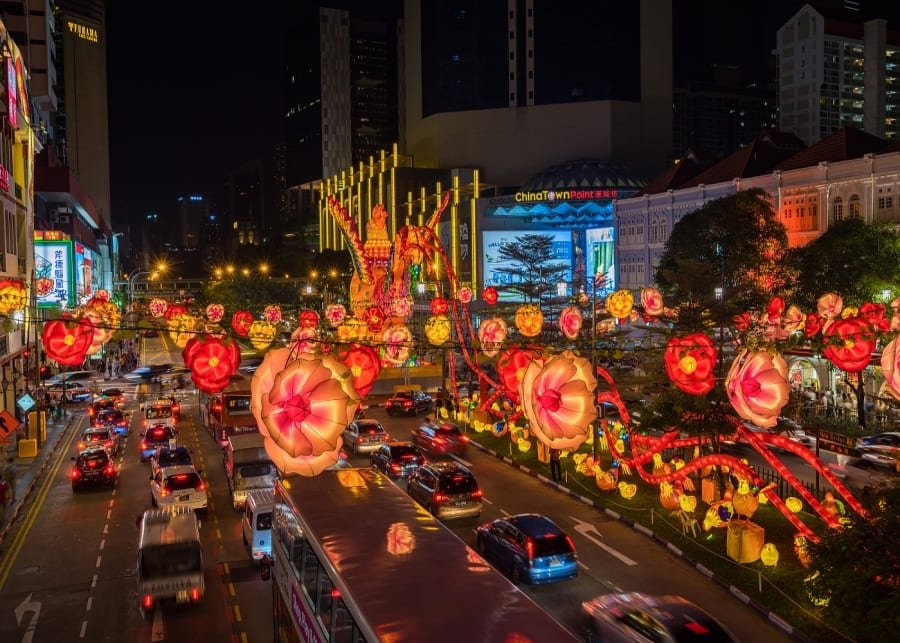
When Traveling To Singapore, experiencing the city’s public holidays and festivals is a fantastic way to immerse yourself in its rich cultural heritage. Singapore is a melting pot of cultures, and its festivals reflect the traditions of its Chinese, Malay, Indian, and Western communities. In this section, we’ll explore the major public holidays and festivals, what to expect, and how to make the most of these vibrant celebrations during your trip.
Why Public Holidays and Festivals Matter in Singapore 🌟
Singapore’s festivals are more than just celebrations—they’re a window into the city’s multicultural soul. Here’s why you should consider timing your trip around these events:
- Cultural Immersion: Experience the traditions, food, and customs of different ethnic groups.
- Unique Experiences: Festivals often feature parades, performances, and special events that are unforgettable.
- Local Interaction: Join locals in their celebrations and gain a deeper understanding of their culture.
Pro Tip: Check the festival dates before your trip and plan your itinerary accordingly.
Major Public Holidays and Festivals in Singapore 🎊
1. Chinese New Year 🧧
- When: January or February (based on the lunar calendar).
- What to Expect:
- Lion Dances: Performances to ward off evil spirits and bring good luck.
- Reunion Dinners: Families gather for a festive meal on New Year’s Eve.
- Chinatown Decorations: Vibrant lights and decorations in Chinatown.
- Pro Tip: Visit Chinatown for the festive atmosphere and try traditional treats like pineapple tarts and bak kwa (barbecued meat).
2. Hari Raya Puasa (Eid al-Fitr) 🌙
- When: May or June (based on the Islamic lunar calendar).
- What to Expect:
- Open Houses: Malay families open their homes to friends and neighbors.
- Geylang Serai Bazaar: A bustling market with festive decorations, food, and shopping.
- Traditional Dishes: Try ketupat (rice cakes) and rendang (spicy meat dish).
- Pro Tip: Visit Kampong Glam for festive lights and cultural performances.
3. Deepavali (Diwali) 🪔
- When: October or November (based on the Hindu lunar calendar).
- What to Expect:
- Little India Decorations: Colorful lights and intricate kolam (rangoli) designs.
- Temple Visits: Visit Sri Veeramakaliamman Temple for prayers and rituals.
- Traditional Sweets: Try laddu and jalebi at local sweet shops.
- Pro Tip: Explore Little India’s street markets for festive shopping and snacks.
4. Christmas 🎄
- When: December 25.
- What to Expect:
- Orchard Road Lights: Stunning light displays and festive decorations.
- Marina Bay Singapore Countdown: A spectacular fireworks display on New Year’s Eve.
- Christmas Markets: Shop for gifts and enjoy festive treats.
- Pro Tip: Visit Gardens by the Bay for the Christmas Wonderland event.
5. Vesak Day 🌸
- When: May (based on the Buddhist lunar calendar).
- What to Expect:
- Temple Visits: Visit temples like the Buddha Tooth Relic Temple for prayers and rituals.
- Processions: Join the candlelight procession to honor Buddha’s birth, enlightenment, and passing.
- Pro Tip: Participate in the release of caged birds as a symbolic act of liberation.
6. National Day 🇸🇬
- When: August 9.
- What to Expect:
- National Day Parade: A grand celebration featuring performances, military displays, and fireworks.
- Patriotic Spirit: Locals dress in red and white, the colors of the Singapore flag.
- Pro Tip: Arrive early to secure a good spot for the parade and fireworks.
7. Mid-Autumn Festival 🏮
- When: September or October (based on the lunar calendar).
- What to Expect:
- Lantern Displays: Beautiful lanterns light up Chinatown and Gardens by the Bay.
- Mooncakes: Try traditional mooncakes filled with lotus paste, red bean, or salted egg yolk.
- Pro Tip: Join a lantern-making workshop or lantern walk for a hands-on experience.
Tips for Experiencing Festivals in Singapore 🧳
- Plan Ahead: Festivals can attract large crowds, so book accommodations and transportation early.
- Respect Local Customs: Dress modestly and follow etiquette when visiting religious sites.
- Try Local Food: Festivals are a great opportunity to sample traditional dishes and treats.
- Stay Hydrated: Singapore’s tropical climate can be intense, so drink plenty of water.
Pro Tip: Use the MyTransport.SG app to navigate public transport during busy festival periods.
When Traveling To Singapore, timing your trip around public holidays and festivals offers a unique opportunity to experience the city’s vibrant culture and traditions. From the colorful lights of Deepavali to the festive cheer of Christmas, these celebrations provide unforgettable memories and a deeper connection to the local way of life.
📶 15. Wi-Fi and Connectivity

When Traveling To Singapore, staying connected is essential for navigating the city, sharing your experiences, and staying in touch with loved ones. Fortunately, Singapore is a tech-savvy city with excellent Wi-Fi and connectivity options. In this section, we’ll explore how to stay connected during your trip, including Wi-Fi availability, SIM cards, and tips for seamless connectivity.
Why Connectivity Matters in Singapore 🌟
Singapore’s reputation as a smart city means you’ll find robust connectivity options everywhere. Here’s why staying connected is important:
- Navigation: Use maps and transport apps to get around the city easily.
- Communication: Stay in touch with family and friends through messaging and video calls.
- Information Access: Look up attractions, restaurants, and events on the go.
- Social Media: Share your travel experiences in real-time.
Pro Tip: Download offline maps and essential apps before your trip to avoid connectivity issues.
Wi-Fi Availability in Singapore 📡
1. Free Public Wi-Fi
Singapore offers free Wi-Fi in many public areas through the Wireless@SG network.
- How to Connect:
- Search for the “Wireless@SG” network on your device.
- Register with your mobile number or social media account.
- Coverage: Available in most public spaces, including malls, parks, and MRT stations.
Pro Tip: Download the Wireless@SG app for easier registration and automatic connection.
2. Hotels and Accommodations
Most hotels and accommodations in Singapore offer free Wi-Fi for guests.
- Speed: Generally fast and reliable, but may vary depending on the hotel.
- Access: Usually requires a password provided at check-in.
Pro Tip: Check the Wi-Fi speed and data limits before booking your accommodation.
3. Cafes and Restaurants
Many cafes and restaurants in Singapore offer free Wi-Fi for customers.
- Popular Chains: Starbucks, McDonald’s, and Coffee Bean & Tea Leaf.
- Access: Ask for the Wi-Fi password at the counter.
Pro Tip: Use Wi-Fi in cafes to save on mobile data while enjoying a coffee break.
SIM Cards and Mobile Data 📱
1. Purchasing a SIM Card
Buying a local SIM card is a cost-effective way to stay connected during your trip.
- Where to Buy:
- Airport: Changi Airport has counters selling SIM cards from major providers like Singtel, StarHub, and M1.
- Convenience Stores: 7-Eleven and Cheers stores also sell SIM cards.
- Cost: Prepaid SIM cards start at around S$15, including data, calls, and texts.
Pro Tip: Choose a SIM card with a data plan that suits your usage needs.
2. Mobile Data Plans
Singapore’s mobile data plans are affordable and offer good coverage.
- Providers: Singtel, StarHub, and M1 are the main providers.
- Coverage: Excellent coverage across the island, including underground MRT stations.
Pro Tip: Check if your phone is unlocked and compatible with local networks before purchasing a SIM card.
3. eSIMs
For travelers with eSIM-compatible devices, eSIMs are a convenient option.
- Providers: Airalo and SimOptions offer eSIMs for Singapore.
- Activation: Download the eSIM profile and activate it on your device.
Pro Tip: eSIMs are ideal for short trips and eliminate the need for a physical SIM card.
Tips for Staying Connected in Singapore 🧳
- Download Offline Maps: Use apps like Google Maps or CityMapper to navigate without data.
- Use Messaging Apps: Apps like WhatsApp and Telegram are popular for communication.
- Monitor Data Usage: Keep track of your data usage to avoid extra charges.
- Carry a Power Bank: Ensure your devices stay charged throughout the day.
Pro Tip: Use a multi-currency travel card like Revolut or Wise for convenient and cost-effective transactions.
When Traveling To Singapore, staying connected is easy thanks to the city’s excellent Wi-Fi and mobile data options. Whether you’re using free public Wi-Fi, a local SIM card, or an eSIM, you’ll have no trouble staying online and making the most of your trip.
🔌 16. Electrical Plugs and Adapters
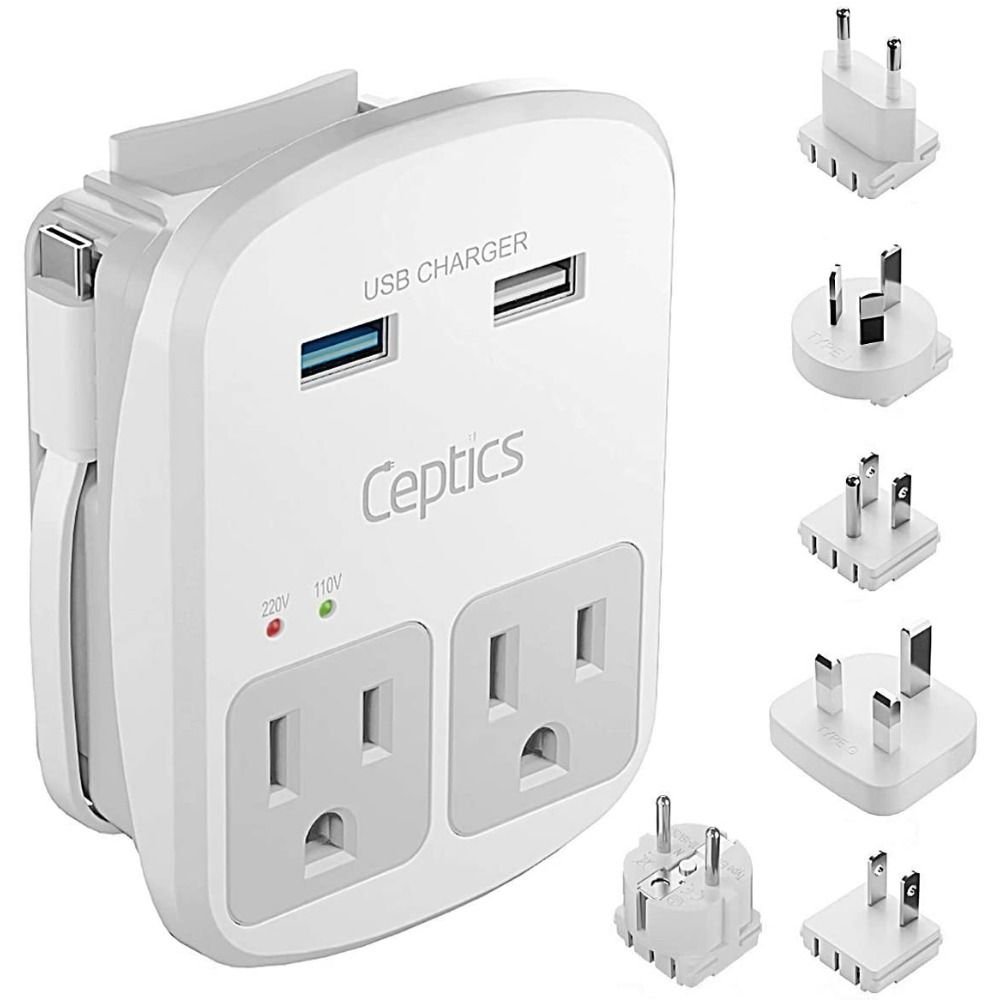
When Traveling To Singapore, understanding the local electrical standards is essential to keep your devices charged and functional. Singapore uses a specific type of plug and voltage, which may differ from your home country. In this section, we’ll explore Singapore’s electrical system, the types of plugs used, and tips for ensuring your devices are compatible during your trip.
Why Electrical Compatibility Matters in Singapore 🌟
Singapore’s electrical system is reliable and efficient, but it’s important to ensure your devices are compatible to avoid any inconveniences. Here’s why this matters:
- Device Safety: Using the wrong adapter or voltage can damage your devices.
- Convenience: Having the right plug ensures you can charge your devices without hassle.
- Travel Preparedness: Being prepared saves time and avoids last-minute shopping for adapters.
Pro Tip: Check your device’s voltage compatibility before plugging it in.
Singapore’s Electrical System ⚡
1. Voltage and Frequency
- Voltage: 230V
- Frequency: 50Hz
2. Plug Types
Singapore uses the Type G plug, which is the same as the UK standard.
- Type G Plug:
- Three rectangular pins in a triangular pattern.
- Commonly used in the UK, Ireland, Malaysia, and Hong Kong.
Pro Tip: If your device uses a different plug type, you’ll need an adapter.
Adapters and Converters 🔌
1. Adapters
Adapters allow you to plug your devices into Singapore’s Type G outlets.
- Types of Adapters:
- Single Adapter: Converts one plug type to another.
- Universal Adapter: Works with multiple plug types, ideal for frequent travelers.
Pro Tip: Purchase a universal adapter that includes Type G compatibility for future trips.
2. Converters
Converters are necessary if your device is not compatible with Singapore’s 230V voltage.
- When to Use a Converter:
- If your device only supports 110V (common in the US, Canada, and Japan).
- Check the label on your device or charger for voltage information.
Pro Tip: Most modern devices (e.g., laptops, smartphones, cameras) support dual voltage (110V-240V) and only require an adapter.
Tips for Handling Electrical Needs in Singapore 🧳
- Check Device Compatibility: Ensure your devices support 230V or use a converter if necessary.
- Bring a Power Strip: A power strip with multiple outlets can be useful for charging multiple devices.
- Use USB Chargers: Many devices can be charged via USB, reducing the need for multiple adapters.
- Purchase Adapters in Advance: Buy adapters before your trip to avoid overpaying at the airport.
Pro Tip: Label your adapters and chargers to keep them organized and easily identifiable.
When Traveling To Singapore, ensuring your devices are compatible with the local electrical system is crucial for a smooth and hassle-free trip. By bringing the right adapters and checking voltage compatibility, you can keep your devices charged and ready to capture every moment of your adventure.
💧 17. Drinking Water and Food Safety

When Traveling To Singapore, staying hydrated and enjoying the local cuisine are essential parts of the experience. Singapore is known for its high hygiene standards and safe drinking water, but it’s still important to be mindful of food and water safety to ensure a healthy trip. In this section, we’ll explore the safety of drinking water, tips for enjoying street food, and how to avoid common food-related issues during your visit.
Why Water and Food Safety Matter in Singapore 🌟
Singapore’s reputation for cleanliness and hygiene makes it a safe destination for travelers. However, understanding local practices can help you avoid any health issues:
- Hydration: Staying hydrated is crucial in Singapore’s tropical climate.
- Food Safety: Street food is a highlight, but knowing where and what to eat ensures a safe experience.
- Health Precautions: Simple steps can prevent foodborne illnesses and keep you feeling your best.
Pro Tip: Always carry a reusable water bottle to stay hydrated and reduce plastic waste.
Drinking Water in Singapore 💧
1. Tap Water Safety
- Quality: Singapore’s tap water is safe to drink and meets World Health Organization (WHO) standards.
- Taste: The water is treated and filtered, making it clean and palatable.
Pro Tip: If you’re unsure about tap water, boil it or use a water purifier bottle.
2. Bottled Water
- Availability: Bottled water is widely available at convenience stores, supermarkets, and vending machines.
- Cost: Affordable, with prices starting at around S$1 for a 1.5-liter bottle.
Pro Tip: Look for brands like Evian, Dasani, or Ice Mountain for reliable quality.
3. Water Fountains
- Locations: Found in parks, MRT stations, and public areas.
- Safety: Generally safe, but use your judgment and avoid fountains that look unclean.
Pro Tip: Use a reusable water bottle to refill at water fountains and stay eco-friendly.
Food Safety in Singapore 🍜
1. Hawker Centers and Food Courts
- Hygiene Standards: Hawker centers are regulated by the National Environment Agency (NEA) and maintain high hygiene standards.
- Popular Centers: Maxwell Food Centre, Lau Pa Sat, and Old Airport Road Food Centre.
Pro Tip: Look for stalls with long queues, as they’re often the most popular and trusted.
2. Street Food
- Safety: Street food in Singapore is generally safe, but choose stalls that look clean and busy.
- Must-Try Dishes: Hainanese Chicken Rice, Chilli Crab, and Laksa.
Pro Tip: Avoid raw or undercooked dishes if you have a sensitive stomach.
3. Restaurants
- Hygiene Ratings: Check for the NEA’s hygiene rating (A, B, or C) displayed at restaurants.
- Fine Dining: High-end restaurants maintain excellent hygiene standards.
Pro Tip: Stick to reputable restaurants and read reviews before dining.
Tips for Ensuring Food and Water Safety 🧳
- Wash Your Hands: Use hand sanitizer or wash your hands before eating.
- Avoid Ice in Drinks: If unsure about the water source, ask for drinks without ice.
- Peel Fruits and Vegetables: Opt for fruits you can peel, like bananas and oranges.
- Stay Hydrated: Drink plenty of water, especially in the heat.
Pro Tip: Carry a small bottle of hand sanitizer and wet wipes for on-the-go hygiene.
Common Food-Related Issues and How to Avoid Them 🚫
1. Foodborne Illnesses
- Symptoms: Stomach cramps, diarrhea, and vomiting.
- Prevention: Eat at clean, reputable establishments and avoid raw or undercooked food.
Pro Tip: If you experience symptoms, stay hydrated and seek medical attention if necessary.
2. Allergies
- Common Allergens: Seafood, nuts, and dairy.
- Communication: Inform staff about your allergies and ask about ingredients.
Pro Tip: Carry allergy medication and a card in the local language listing your allergies.
3. Spicy Food
- Tolerance: Singaporean cuisine can be spicy, so start with milder dishes if you’re not used to heat.
- Alternatives: Ask for less spice or try non-spicy options like Hainanese Chicken Rice.
Pro Tip: Keep a bottle of water or milk handy to soothe your palate.
When Traveling To Singapore, staying hydrated and enjoying the local cuisine are key to a memorable trip. By following simple safety tips and being mindful of what you eat and drink, you can fully immerse yourself in Singapore’s vibrant food scene without any worries.
🎎 18. Local Customs and Traditions
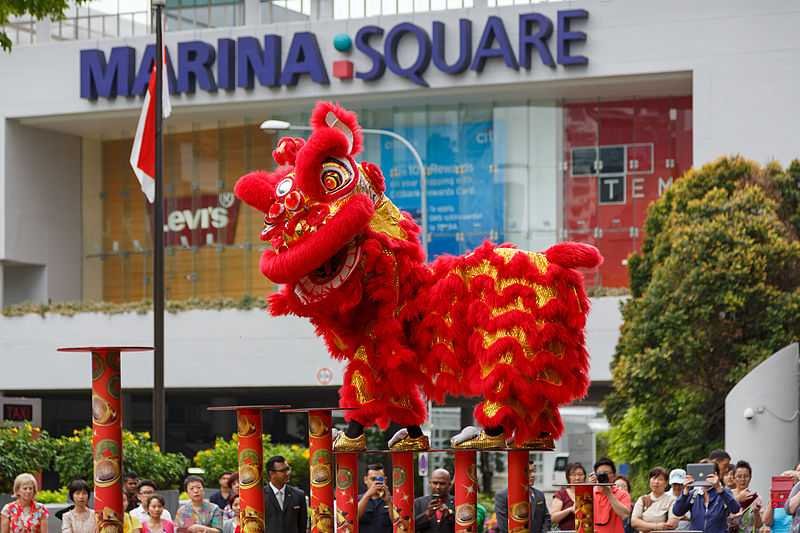
When Traveling To Singapore, understanding and respecting local customs and traditions is essential for a meaningful and enjoyable experience. Singapore is a multicultural society with a rich blend of Chinese, Malay, Indian, and Western influences, each contributing to the city-state’s unique cultural fabric. In this section, we’ll explore the key customs and traditions, how to show respect, and tips for engaging with locals during your trip.
Why Local Customs and Traditions Matter in Singapore 🌟
Singapore’s multicultural heritage makes it a fascinating destination, but it also means that cultural sensitivity is crucial. Here’s why understanding local customs is important:
- Respect for Diversity: Singapore is home to multiple ethnic groups, each with its own traditions and customs.
- Social Harmony: The city-state places a strong emphasis on social harmony and mutual respect.
- Positive Interactions: Understanding local norms helps you connect with locals and enhances your travel experience.
Pro Tip: A little effort to understand and respect local customs goes a long way in making your trip memorable.
General Cultural Etiquette in Singapore 🌏
1. Greetings and Politeness
- Handshakes: A firm handshake is a common greeting, especially in business settings.
- Titles: Use titles like “Mr.” or “Ms.” followed by the surname when addressing someone formally.
- Smiling: A friendly smile is always appreciated and helps break the ice.
Pro Tip: When greeting someone of a different ethnicity, observe their customs. For example, a slight bow is common among Chinese and Japanese locals.
2. Respect for Elders
- Addressing Elders: Use terms like “Uncle” or “Aunty” to show respect, even if they’re not related to you.
- Offering Seats: On public transport, offer your seat to elderly or pregnant passengers.
Pro Tip: Always show deference to elders, as respect for age is deeply ingrained in Singaporean culture.
3. Public Behavior
- Queuing: Singaporeans value orderly lines, so always wait your turn.
- Littering: Singapore has strict anti-littering laws, and fines can be hefty. Always dispose of trash in designated bins.
- Noise Levels: Keep your voice down in public spaces to avoid disturbing others.
Pro Tip: Follow the rules and regulations to avoid fines and show respect for the local community.
Cultural Etiquette by Ethnic Group 🌍
1. Chinese Customs
- Gift Giving: Avoid giving clocks, white flowers, or sharp objects, as they symbolize death or separation.
- Dining Etiquette: Use chopsticks correctly and avoid sticking them upright in a bowl of rice, as it resembles funeral rites.
- Festivals: During Chinese New Year, it’s customary to give red packets (ang baos) with money as a sign of good luck.
Pro Tip: If invited to a Chinese home, bring a small gift like fruit or pastries.
2. Malay Customs
- Greetings: Use the traditional Malay greeting “Selamat pagi” (Good morning) or “Selamat petang” (Good afternoon).
- Dining Etiquette: Always use your right hand for eating and greeting, as the left hand is considered unclean.
- Dress Code: Dress modestly when visiting mosques or Malay homes, covering your shoulders and knees.
Pro Tip: Remove your shoes before entering a Malay home or mosque.
3. Indian Customs
- Greetings: Use the traditional Indian greeting “Namaste” with folded hands.
- Dining Etiquette: Eat with your right hand, as the left hand is considered unclean.
- Festivals: During Deepavali, it’s customary to exchange sweets and light oil lamps.
Pro Tip: Remove your shoes before entering an Indian home or temple.
Tips for Navigating Cultural Differences 🧳
1. Dress Modestly
- General Rule: Dress modestly, especially when visiting religious sites or attending formal events.
- Religious Sites: Cover your shoulders and knees when visiting temples, mosques, or churches.
Pro Tip: Carry a scarf or shawl to cover up when needed.
2. Be Mindful of Religious Practices
- Prayer Times: Be respectful of prayer times, especially in Muslim-majority areas.
- Dietary Restrictions: Be aware of dietary restrictions, such as halal for Muslims and vegetarianism for some Hindus.
Pro Tip: When dining with locals, ask about their dietary preferences to avoid any misunderstandings.
3. Learn Basic Phrases
- English: While widely spoken, learning a few phrases in Mandarin, Malay, or Tamil can help you connect with locals.
- Common Phrases:
- Mandarin: 你好 (Nǐ hǎo) - Hello
- Malay: Terima kasih - Thank you
- Tamil: நன்றி (Naṉṟi) - Thank you
Pro Tip: Use language apps like Google Translate or Duolingo to practice basic phrases before your trip.
When Traveling To Singapore, understanding and respecting local customs and traditions is key to a positive and enriching experience. By being mindful of cultural differences, showing respect for traditions, and embracing the diversity of Singapore’s society, you’ll not only enjoy your trip but also leave a positive impression on the locals.
💸 19. Budgeting for Your Trip
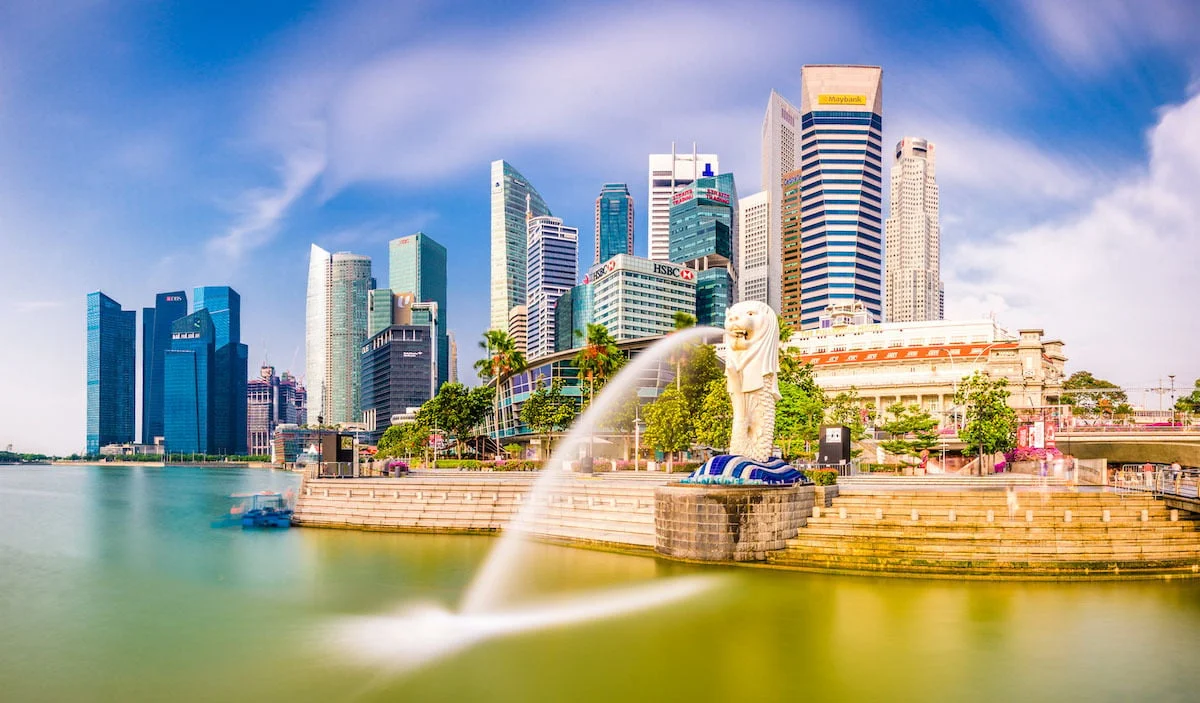
When Traveling To Singapore, budgeting is a crucial aspect of planning your trip. Known for its high standard of living, Singapore can be an expensive destination, but with careful planning, you can enjoy the city without breaking the bank. In this section, we’ll explore how to budget for your trip, including accommodation, food, transportation, and activities, along with tips to save money while exploring the Lion City.
Why Budgeting Matters in Singapore 🌟
Singapore offers a wide range of experiences, from luxury shopping to affordable street food. Here’s why budgeting is important:
- Cost Management: Helps you manage expenses and avoid overspending.
- Prioritization: Allows you to allocate funds to the experiences that matter most to you.
- Stress Reduction: Reduces financial stress, letting you focus on enjoying your trip.
Pro Tip: Create a daily budget and track your expenses to stay on track.
Key Expenses to Consider 🧾
1. Accommodation 🏨
- Luxury Hotels: S300−S300−S500 per night (e.g., Marina Bay Sands, The Fullerton Bay Hotel).
- Mid-Range Hotels: S150−S150−S300 per night (e.g., Hotel G Singapore, YOTEL Singapore).
- Budget Options: S50−S50−S150 per night (e.g., The Pod Boutique Capsule, Five Stones Hostel).
Pro Tip: Book accommodations in advance and look for deals on platforms like Booking.com or Agoda.
2. Food 🍜
- Hawker Centers: S3−S3−S10 per meal (e.g., Maxwell Food Centre, Lau Pa Sat).
- Mid-Range Restaurants: S20−S20−S50 per meal.
- Fine Dining: S$100+ per meal.
Pro Tip: Eat at hawker centers for affordable and delicious local cuisine.
3. Transportation 🚇
- Public Transport: S1−S1−S3 per trip (MRT and buses).
- Taxis and Ride-Hailing: S10−S10−S30 per trip (e.g., Grab, ComfortDelGro).
- EZ-Link Card: S12(includesS12(includesS5 stored value).
Pro Tip: Use the MRT and buses for the most cost-effective way to get around.
4. Activities and Attractions 🏞️
- Gardens by the Bay: S$28 (Flower Dome and Cloud Forest).
- Singapore Zoo: S$48 (adult ticket).
- Universal Studios Singapore: S$82 (adult ticket).
Pro Tip: Look for combo tickets and discounts on platforms like Klook or Viator.
5. Shopping 🛍️
- Orchard Road: High-end shopping with luxury brands.
- Street Markets: Affordable finds at Bugis Street and Chinatown.
Pro Tip: Visit during the Great Singapore Sale (June to August) for discounts and promotions.
Tips for Budgeting in Singapore 🧳
1. Set a Daily Budget
- Budget Travelers: S50−S50−S100 per day.
- Mid-Range Travelers: S150−S150−S250 per day.
- Luxury Travelers: S$300+ per day.
Pro Tip: Allocate funds for accommodation, food, transportation, and activities based on your priorities.
2. Use Public Transport
- EZ-Link Card: Offers discounted fares compared to single-trip tickets.
- Singapore Tourist Pass: Unlimited rides for 1, 2, or 3 days (S$22 for a 1-day pass).
Pro Tip: Walk or cycle for short distances to save on transport costs.
3. Eat Like a Local
- Hawker Centers: Affordable and delicious meals.
- Street Food: Try local favorites like Hainanese Chicken Rice and Chilli Crab.
Pro Tip: Avoid dining in touristy areas where prices are higher.
4. Look for Free Activities
- Gardens by the Bay: Free entry to outdoor gardens.
- Singapore Botanic Gardens: Free entry, except for the National Orchid Garden.
- Marina Bay Sands Light Show: Free nightly light and water show.
Pro Tip: Explore neighborhoods like Chinatown, Little India, and Kampong Glam for free cultural experiences.
5. Book in Advance
- Accommodation: Early bookings often come with discounts.
- Attractions: Pre-book tickets online for discounts and skip-the-line access.
Pro Tip: Use platforms like Klook and Viator for discounted attraction tickets.
Sample Budget for a 5-Day Trip 📊
| Category | Budget Traveler | Mid-Range Traveler | Luxury Traveler |
|---|---|---|---|
| Accommodation | S250(S250(S50/night) | S750(S750(S150/night) | S1,500(S1,500(S300/night) |
| Food | S100(S100(S20/day) | S250(S250(S50/day) | S500(S500(S100/day) |
| Transportation | S$30 (EZ-Link Card) | S$50 (Taxis included) | S$100 (Taxis included) |
| Activities | S$100 (2-3 paid) | S$250 (4-5 paid) | S$500 (6+ paid) |
| Total | S$480 | S$1,300 | S$2,600 |
Pro Tip: Adjust the budget based on your travel style and preferences.
When Traveling To Singapore, careful budgeting ensures you can enjoy the city’s diverse experiences without financial stress. By prioritizing your expenses, taking advantage of affordable options, and planning ahead, you can make the most of your trip to the Lion City.
🍸 20. Nightlife in Singapore

When Traveling To Singapore, experiencing the city’s vibrant nightlife is a must. Known for its diverse and dynamic nightlife scene, Singapore offers everything from rooftop bars and nightclubs to live music venues and cultural performances. Whether you’re looking for a sophisticated evening or a lively night out, Singapore has something for everyone. In this section, we’ll explore the best nightlife spots, tips for enjoying the nightlife, and how to make the most of your evenings in the Lion City.
Why Singapore’s Nightlife is Unmissable 🌟
Singapore’s nightlife is as diverse as its culture, offering a mix of modern and traditional experiences. Here’s why you should explore the city after dark:
- Rooftop Bars: Stunning views of the city skyline.
- Nightclubs: World-class DJs and vibrant dance floors.
- Live Music: From jazz bars to indie bands, there’s something for every music lover.
- Cultural Performances: Traditional shows and performances that showcase Singapore’s heritage.
Pro Tip: Check out the local event calendars for special performances and festivals.
Top Nightlife Destinations in Singapore 🌃
1. Clarke Quay 🍹
- What It Is: A vibrant riverside area known for its nightlife, restaurants, and bars.
- Highlights:
- Zouk: One of the world’s top nightclubs with international DJs.
- Highlander Bar: A Scottish-themed bar with live music and a great selection of whiskies.
- Pro Tip: Visit on a weekend for a lively atmosphere and special events.
2. Marina Bay Sands 🌆
- What It Is: A luxury destination with upscale bars and clubs.
- Highlights:
- CE LA VI: A rooftop bar with panoramic views of the city skyline.
- Avenue Lounge: Sophisticated setting with live jazz performances.
- Pro Tip: Dress smart casual for entry to most bars and clubs in Marina Bay Sands.
3. Ann Siang Hill and Club Street 🎶
- What It Is: A trendy area with boutique bars and live music venues.
- Highlights:
- Operation Dagger: A speakeasy-style bar with innovative cocktails.
- Live Music: Venues like Blu Jaz Cafe offer jazz and indie performances.
- Pro Tip: Explore the area on foot to discover hidden gems and cozy bars.
4. Haji Lane 🎨
- What It Is: A narrow street filled with quirky bars and cafes.
- Highlights:
- Bar Stories: A cocktail bar where drinks are customized based on your preferences.
- The Singapura Club: A retro bar with a 1960s vibe.
- Pro Tip: Visit during the evening for a bohemian atmosphere and vibrant street art.
5. Sentosa Island 🏖️
- What It Is: A resort island with beach clubs and nightlife options.
- Highlights:
- Tanjong Beach Club: A beachfront venue with a pool, bar, and live DJs.
- Waves House: A beach club with a laid-back vibe and great cocktails.
- Pro Tip: Combine your night out with a day at the beach for a perfect evening.
Tips for Enjoying Nightlife in Singapore 🧳
1. Dress Code
- Smart Casual: Most bars and clubs have a dress code, so avoid flip-flops and sportswear.
- Formal Attire: Some high-end venues may require more formal attire.
Pro Tip: Check the dress code before heading out to avoid being turned away.
2. Entry Fees
- Cover Charges: Some clubs and bars have cover charges, especially on weekends.
- Drink Prices: Expect to pay S15−S15−S25 for cocktails and S10−S10−S15 for beers.
Pro Tip: Look for happy hour deals to save on drinks.
3. Transportation
- Public Transport: The MRT runs until midnight, making it easy to get around.
- Taxis and Ride-Hailing: Use Grab or ComfortDelGro for late-night rides.
Pro Tip: Plan your route in advance and have a backup plan for getting back to your accommodation.
4. Safety
- Low Crime: Singapore is one of the safest cities in the world, but always stay aware of your surroundings.
- Emergency Numbers: Police (999), Ambulance/Fire (995).
Pro Tip: Stick to well-lit and populated areas, especially at night.
Unique Nightlife Experiences 🌟
1. Night Safari 🦒
- What It Is: A nocturnal zoo experience with guided tram rides and walking trails.
- Highlights: See nocturnal animals like tigers, leopards, and elephants in their natural habitat.
- Pro Tip: Book tickets in advance to avoid long queues. Book Here
2. Cultural Performances 🎭
- What It Is: Traditional shows and performances that showcase Singapore’s heritage.
- Highlights:
- Siong Leng Musical Association: Chinese opera and traditional music.
- Sri Mariamman Temple: Cultural performances during festivals.
- Pro Tip: Check local event calendars for performance schedules.
3. Night Markets 🛍️
- What It Is: Markets that come alive at night with food, shopping, and entertainment.
- Highlights:
- Geylang Serai Bazaar: Festive market during Ramadan.
- Chinatown Night Market: Vibrant market with traditional Chinese goods.
- Pro Tip: Visit during festivals for a unique shopping experience.
When Traveling To Singapore, the city’s nightlife offers a diverse range of experiences that cater to every taste. From rooftop bars with stunning views to vibrant nightclubs and cultural performances, Singapore’s nightlife scene is as dynamic as the city itself.
👨👩👧👦 21. Family-Friendly Activities When Traveling To Singapore
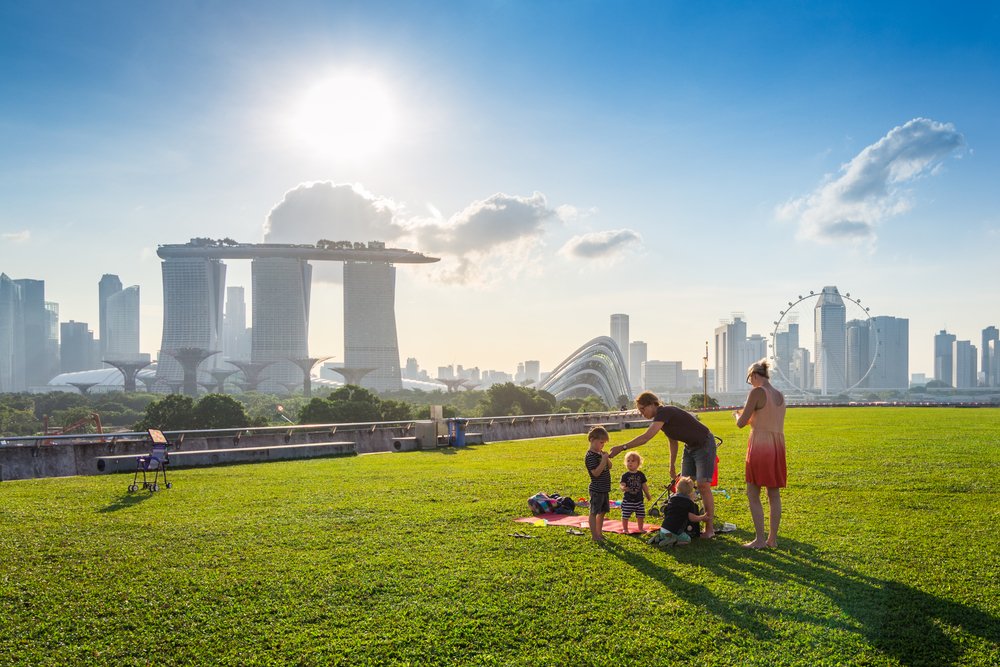
When Traveling To Singapore with your family, you’ll find a wealth of activities that cater to all ages. From thrilling theme parks and interactive museums to lush green spaces and wildlife encounters, Singapore is a paradise for families. In this section, we’ll explore the best family-friendly activities, tips for planning your days, and how to make the most of your family vacation in the Lion City.
Why Singapore is Perfect for Families 🌟
Singapore is renowned for its family-friendly attractions and safe, clean environment. Here’s why it’s an ideal destination for families:
- Diverse Attractions: Something for everyone, from toddlers to teens and parents.
- Safety: One of the safest cities in the world, making it stress-free for family travel.
- Convenience: Excellent public transport and stroller-friendly pathways.
- Educational Opportunities: Many attractions offer interactive and educational experiences.
Pro Tip: Plan your itinerary in advance to balance fun and relaxation for the whole family.
Top Family-Friendly Activities in Singapore 🏞️
1. Universal Studios Singapore 🎢
- What It Is: A world-class theme park with rides and attractions based on popular movies.
- Highlights:
- Transformers The Ride: An immersive 3D ride.
- Sesame Street Spaghetti Space Chase: Perfect for younger kids.
- Pro Tip: Arrive early to avoid long queues and prioritize must-see attractions. Book Here
2. Singapore Zoo 🦒
- What It Is: One of the world’s best rainforest zoos, home to over 2,800 animals.
- Highlights:
- Rainforest Kidzworld: A water play area and petting zoo.
- Animal Shows: Interactive shows like the Splash Safari.
- Pro Tip: Visit the Night Safari for a unique nocturnal experience. Book Here
3. S.E.A. Aquarium 🐠
- What It Is: One of the largest aquariums in the world, located on Sentosa Island.
- Highlights:
- Open Ocean Habitat: A massive tank with manta rays and sharks.
- Interactive Touch Pool: Kids can touch starfish and sea cucumbers.
- Pro Tip: Combine your visit with other Sentosa attractions like Adventure Cove Waterpark. Book Here
4. Gardens by the Bay 🌳
- What It Is: A futuristic nature park with stunning gardens and attractions.
- Highlights:
- Cloud Forest: A misty mountain with a waterfall and lush vegetation.
- Children’s Garden: A water play area and interactive garden.
- Pro Tip: Visit in the evening for the Garden Rhapsody Light Show. Book Here
5. Science Centre Singapore 🔬
- What It Is: An interactive science museum with hands-on exhibits.
- Highlights:
- KidsSTOP: A dedicated children’s science center.
- Omni-Theatre: A dome-shaped IMAX theater.
- Pro Tip: Check the schedule for special workshops and demonstrations. Book Here
6. Sentosa Island 🏖️
- What It Is: A resort island with beaches, theme parks, and family-friendly attractions.
- Highlights:
- Palawan Beach: A family-friendly beach with a suspension bridge to a small island.
- Skyline Luge: A fun ride with panoramic views.
- Pro Tip: Spend a full day exploring the island’s attractions. Book Here
7. Jurong Bird Park 🦜
- What It Is: A bird park with over 3,500 birds from 400 species.
- Highlights:
- High Flyers Show: A bird show featuring parrots and hornbills.
- Waterfall Aviary: A walk-through aviary with a 30-meter waterfall.
- Pro Tip: Visit the Bird Discovery Centre for interactive exhibits. Book Here
8. Singapore Botanic Gardens 🌿
- What It Is: A UNESCO World Heritage Site with lush gardens and walking trails.
- Highlights:
- Jacob Ballas Children’s Garden: A garden designed for kids with play areas and educational exhibits.
- Swan Lake: A serene spot for a family picnic.
- Pro Tip: Visit early in the morning for a peaceful experience.
Tips for Enjoying Family-Friendly Activities 🧳
- Plan Ahead: Book tickets for popular attractions in advance to avoid long queues.
- Stay Hydrated: Singapore’s tropical climate can be intense, so carry water bottles.
- Use Public Transport: The MRT is stroller-friendly and convenient for families.
- Pack Essentials: Bring sunscreen, hats, and insect repellent for outdoor activities.
Pro Tip: Use the MyTransport.SG app for real-time updates on public transport.
Sample Family Itinerary for 5 Days 📅
| Day | Morning | Afternoon | Evening |
|---|---|---|---|
| 1 | Singapore Zoo | River Safari | Night Safari |
| 2 | Universal Studios Singapore | S.E.A. Aquarium | Sentosa Beaches |
| 3 | Gardens by the Bay | Science Centre Singapore | Marina Bay Sands Light Show |
| 4 | Jurong Bird Park | Singapore Botanic Gardens | Clarke Quay |
| 5 | Chinatown Exploration | Little India | Haji Lane |
Pro Tip: Adjust the itinerary based on your family’s interests and energy levels.
When Traveling To Singapore with your family, the city offers a plethora of activities that cater to all ages and interests. From thrilling theme parks and interactive museums to lush gardens and wildlife encounters, Singapore ensures a memorable and enjoyable experience for the whole family.
🌿 22. Eco-Friendly Travel Tips When Traveling To Singapore
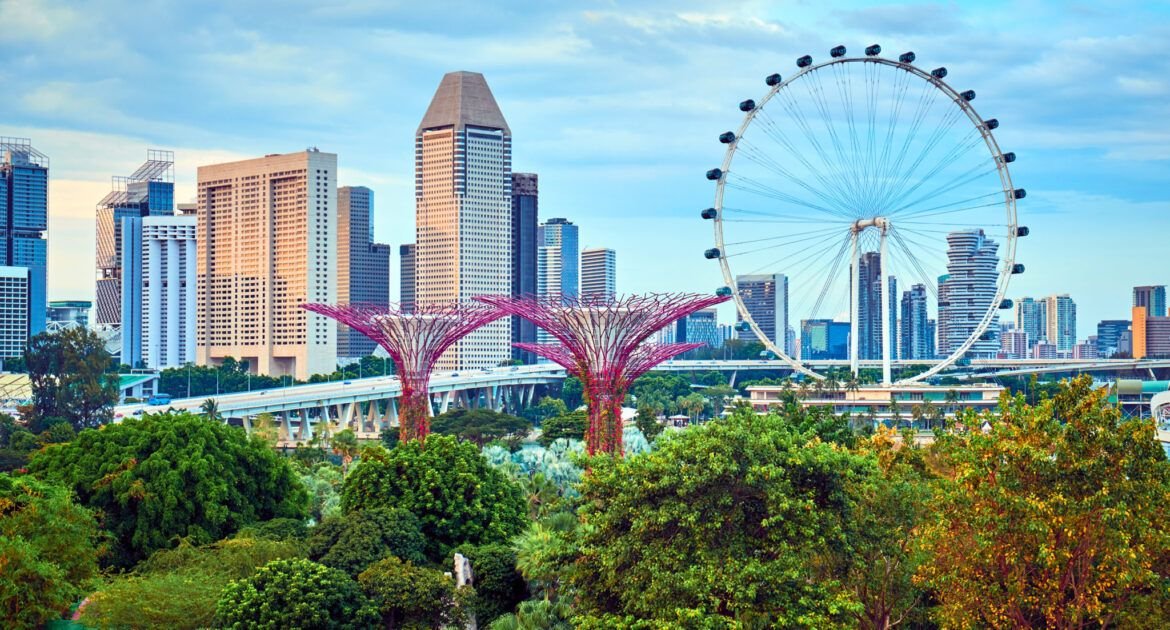
Singapore is a vibrant city-state known for its lush greenery, modern architecture, and commitment to sustainability. If you're planning to visit Singapore and want to travel responsibly, here are some eco-friendly tips to help you reduce your environmental impact while enjoying your trip:
1. Choose Eco-Friendly Accommodation �️
- Stay in Green-Certified Hotels: Look for hotels with sustainability certifications like the Singapore Green Label or EarthCheck. Many hotels in Singapore are committed to reducing energy consumption, waste, and water usage.
- Opt for Eco-Friendly Amenities: Bring your own reusable toiletries (e.g., shampoo bars, refillable containers) to avoid single-use plastics.
2. Use Public Transportation �
- Efficient Public Transit: Singapore’s public transportation system is one of the best in the world. Use the MRT (Mass Rapid Transit) and buses to get around. They are energy-efficient and reduce carbon emissions compared to taxis or private cars.
- Walk or Cycle: Singapore is a walkable city with well-maintained sidewalks and pedestrian-friendly paths. Rent a bike from SG Bike or Anywheel to explore parks and neighborhoods.
3. Reduce Plastic Waste 🚯
- Bring a Reusable Water Bottle: Singapore’s tap water is safe to drink, so carry a reusable bottle and refill it at water stations available in malls, parks, and MRT stations.
- Say No to Single-Use Plastics: Avoid plastic bags, straws, and cutlery. Bring your own reusable shopping bag for souvenirs or groceries.
4. Support Local and Sustainable Businesses 🛍️
- Shop at Eco-Friendly Stores: Visit stores like The Social Space or Eco.Le for sustainable products, from clothing to home goods.
- Eat at Farm-to-Table Restaurants: Support restaurants that source ingredients locally, such as Open Farm Community or The Green Collective.
5. Explore Nature Responsibly 🌳
- Visit Singapore’s Green Spaces: Explore eco-friendly attractions like Gardens by the Bay, Singapore Botanic Gardens (a UNESCO World Heritage Site), and MacRitchie Reservoir. Stick to designated trails and avoid disturbing wildlife.
- Join Eco-Tours: Participate in guided eco-tours that focus on conservation and education, such as Pulau Ubin island tours or mangrove kayaking adventures.
6. Minimize Energy Consumption 💡
- Turn Off Lights and AC: When leaving your hotel room, switch off lights, air conditioning, and electronics to save energy.
- Use Natural Light: Singapore is sunny year-round, so take advantage of natural light during the day.
7. Respect Local Culture and Environment 🌏
- Follow Recycling Rules: Singapore has strict waste management policies. Use the correct recycling bins for paper, plastic, and glass.
- Be Mindful of Water Usage: Singapore is a water-scarce country. Take shorter showers and reuse towels when possible.
8. Pack Light and Smart 🎒
- Bring Eco-Friendly Gear: Pack reusable items like a travel cutlery set, cloth napkins, and a foldable tote bag.
- Choose Sustainable Luggage: Opt for luggage made from recycled or eco-friendly materials.
9. Offset Your Carbon Footprint 🌍
- Carbon Offset Programs: Consider offsetting your flight emissions by contributing to carbon offset programs. Many airlines offer this option when booking tickets.
- Plant a Tree: Participate in local tree-planting initiatives or donate to organizations like Garden City Fund to support Singapore’s reforestation efforts.
10. Spread Awareness 📢
- Share Your Eco-Friendly Journey: Inspire others by sharing your sustainable travel experiences on social media using hashtags like #EcoFriendlySingapore or #SustainableTravel.
By following these tips, you can enjoy your trip to Singapore while minimizing your environmental impact and supporting the city’s sustainability efforts. Happy travels!
📱 23. Language Apps and Translation Tools
While English is widely spoken, these apps can help:
- Google Translate: For instant translations.
- Duolingo: Learn basic phrases in Mandarin or Malay.
Pro Tip: Download offline language packs for convenience.
🎁 24. Souvenirs and Gifts
Take home a piece of Singapore:
- Kaya Jam: A sweet coconut jam.
- Singapore Sling Kit: Make your own iconic cocktail at home.
- Peranakan Crafts: Traditional handicrafts from the Peranakan culture.
Pro Tip: Shop at local markets for unique and affordable souvenirs.
🌟 25. Final Tips for Traveling To Singapore
- Plan Ahead: Research and book accommodations, attractions, and transportation in advance.
- Stay Flexible: Be prepared for changes in weather or plans.
- Enjoy the Experience: Singapore is a city of contrasts, so embrace its diversity and beauty.
🌏 Final Thoughts on Traveling To Singapore
Singapore is a destination that offers something for everyone, from iconic landmarks and cultural experiences to delicious food and vibrant nightlife. By following these 25 Things You Need To Know Before Traveling To Singapore, you’ll be well-prepared for an unforgettable adventure in the Lion City.
If you have any questions, leave a comment below or send me a message!
Read More Similar Articles
